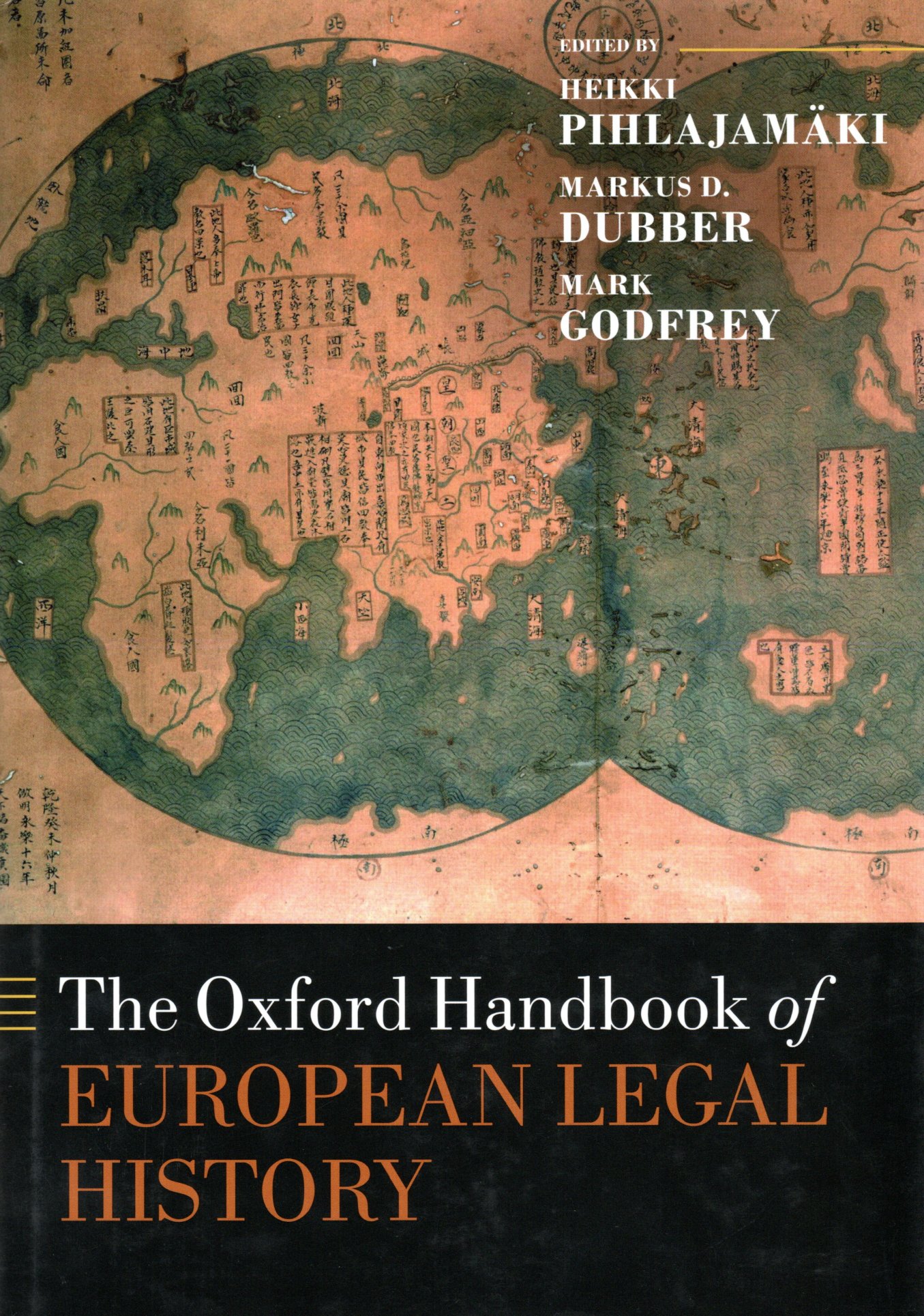
Livros
Novas aquisições / incorporações
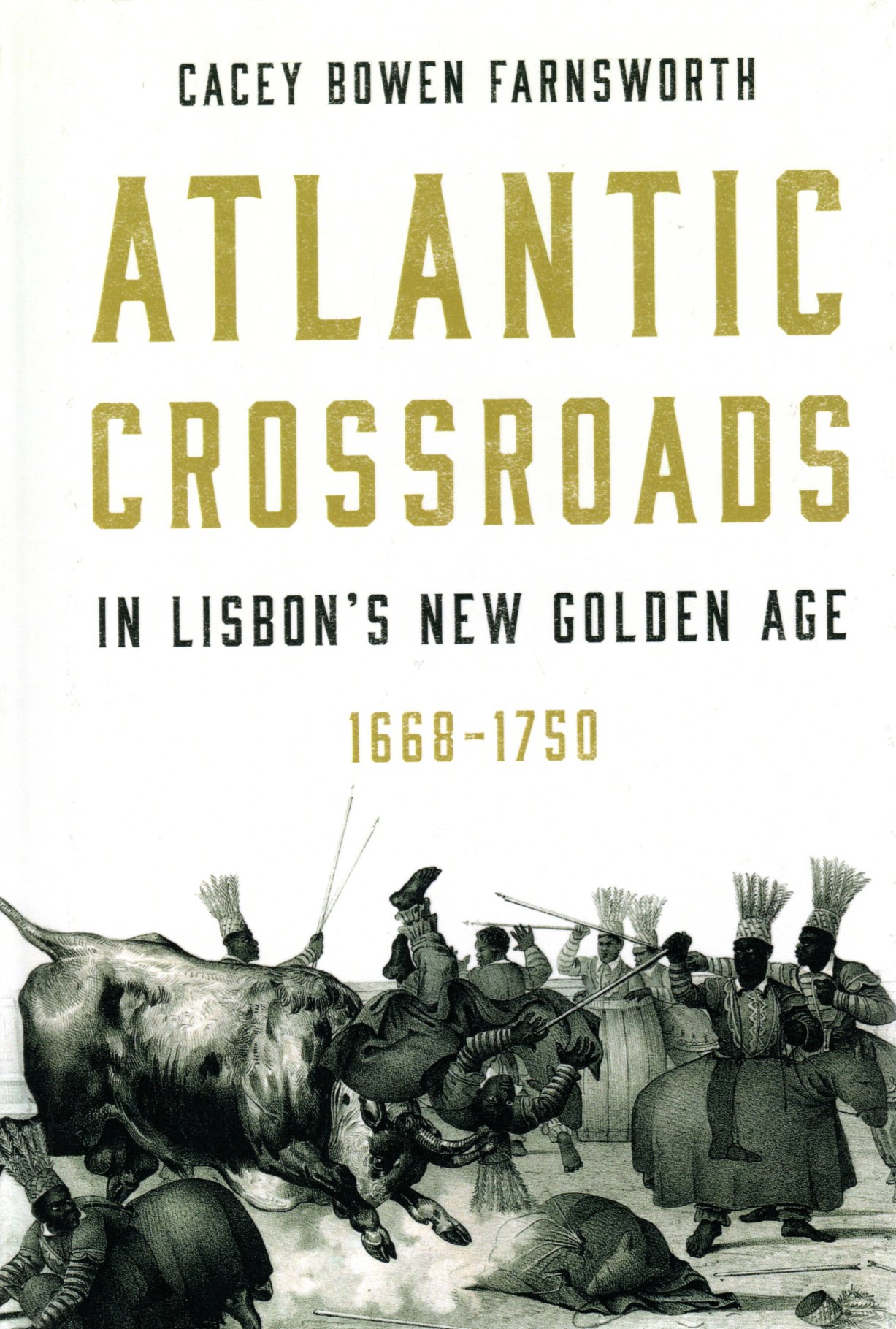
Cacey Bowen Farnsworth (2024). Atlantic Crossroads in Lisbon’s New Golden Age, 1668–1750. Pennsylvania University Press. 228 pp.
Resumo
Long dependent on the Asian spice trade, Portugal suffered serious setbacks during the period of political union with Spain (1580–1640), as the Dutch and others seized key regions and destroyed commercial monopolies. By 1668, the greatest hope for a renewed Portuguese empire lay to the west. This book examines the “Atlanticization” of Lisbon during the early modern era, investigating the social, economic, religious, and political evolution that took place in Portugal’s capital during a period of upheaval and transformation in Europe and in the Atlantic world.
In this book, Cacey Bowen Farnsworth shows how, between 1668 and 1750, Lisbon became a crossroads where colonial developments intermingled with metropolitan and global influences to produce something novel among European port capitals. Drawing from extensive primary and secondary sources from Portugal, Brazil, England, France, and Spain,Farnsworth lays out how Lisbon’s transformations were generated in commercial exchanges, especially the slave trade, as well as in the often-tense arrangements between the British and the Portuguese, and he shows how social, economic, cultural, and religious transformations made Lisbon a unique center of encounter.
Responding to valid criticisms of Atlantic history, Farnsworth’s history of early modern Lisbon demonstrates that historians do not always have to defer to a global lens of analysis. It is sure to be of value to any researcher interested in early modern Iberia, commerce, and globalism.
Cota na biblioteca do CHSC: 27-6-21
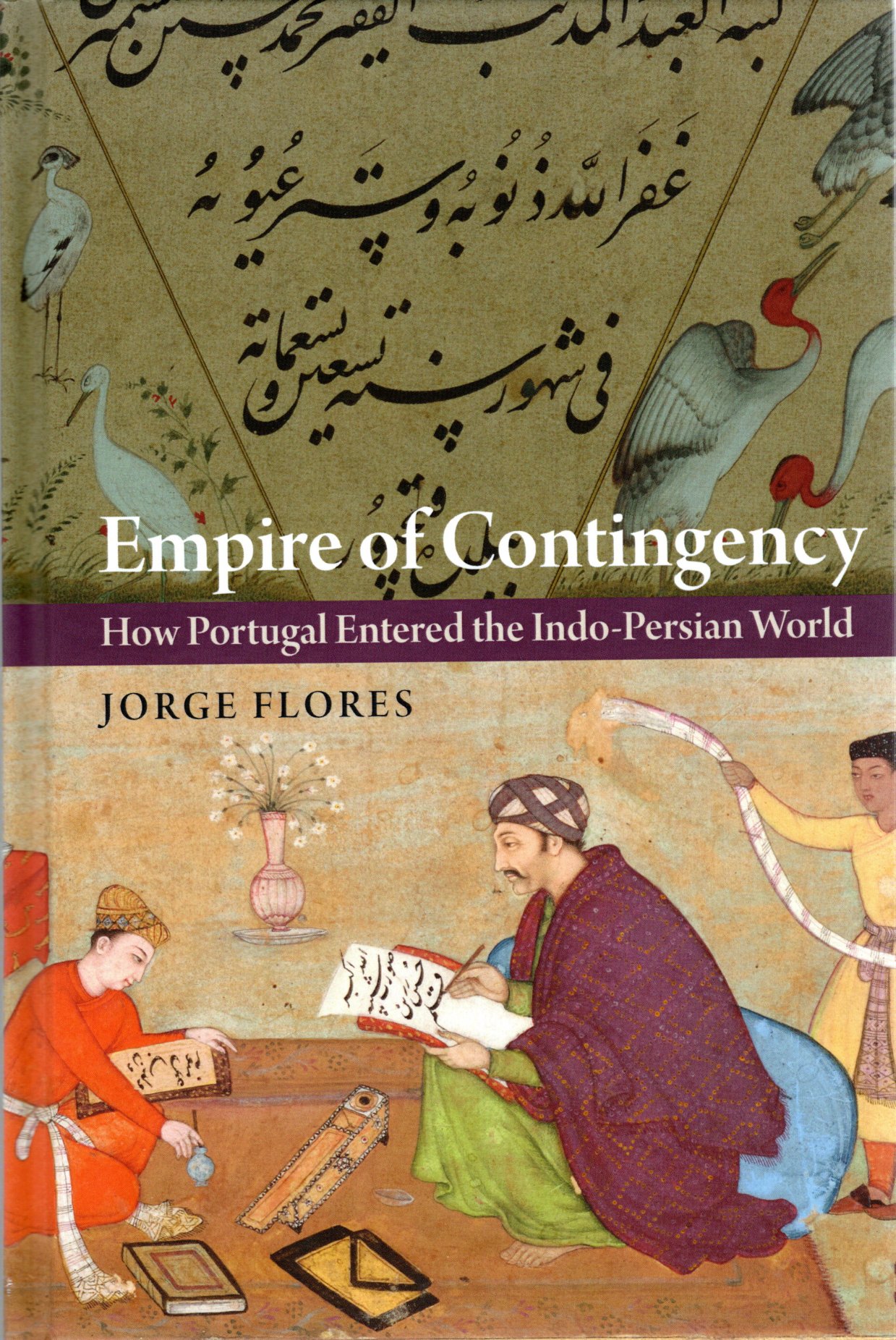
Jorge Flores (2024). Empire of Contingency: How Portugal Entered the Indo-Persian World. Pennsylvania University Press. 326 pp.
Resumo
Empire of Contingency explores the information and communication practices of the Portuguese empire in late sixteenth- and seventeenth-century India—a period during which Portuguese imperial ambitions were struggling for survival, while the Mughal empire was at the height of its power and influence. Jorge Flores uncovers the tenuous but ingenious apparatuses of intelligence through which the Estado da Índia (the “State of the Indies,” the name given to the Portuguese political administrative unit in the region between the Cape of Good Hope and East Asia) endeavored to survive in a vast Indo-Persian world shaped by the influence and power of the Mughal empire.
Detailing the complex relations that the officials of the Portuguese empire, particularly in Goa, the capital of the Estado da Índia, maintained with the Mughal empire as well as the sultanates of Ahmadnagar and Bijapur in the Deccan region—through information gathering, record-keeping, interpreting, and diplomatic correspondence—the book demonstrates how the Portuguese territories along the western coast of India were substantially incorporated into the vast Persianate cultural sphere spanning from Iran to Southeast Asia. The process of empire-building on the fringes of the Persianate world and the prolonged interaction with the Mughal empire, Ahmadnagar, and Bijapur, Flores argues, led to the irregular, non-linear, and incomplete assimilation of the Portuguese empire into Persianate India.
Overturning teleological narratives that portray the workings of (European) empire as the unilateral imposition of power dynamics by a dominant, omniscient actor, Flores reveals how Portuguese imperial administrators were vulnerable participants in a network of relations involving multiple political powers—relations that required enormous bureaucratic and diplomatic effort to understand and successfully navigate. Showing how a European empire was drawn into the political practices and rituals of the Indo-Persian world, Flores decenters the lenses conventionally used to observe the Portuguese empire in Asia and helps us rethink its nature while questioning the boundaries of the Indo-Persian world.
Cota na biblioteca do CHSC: 27-6-18
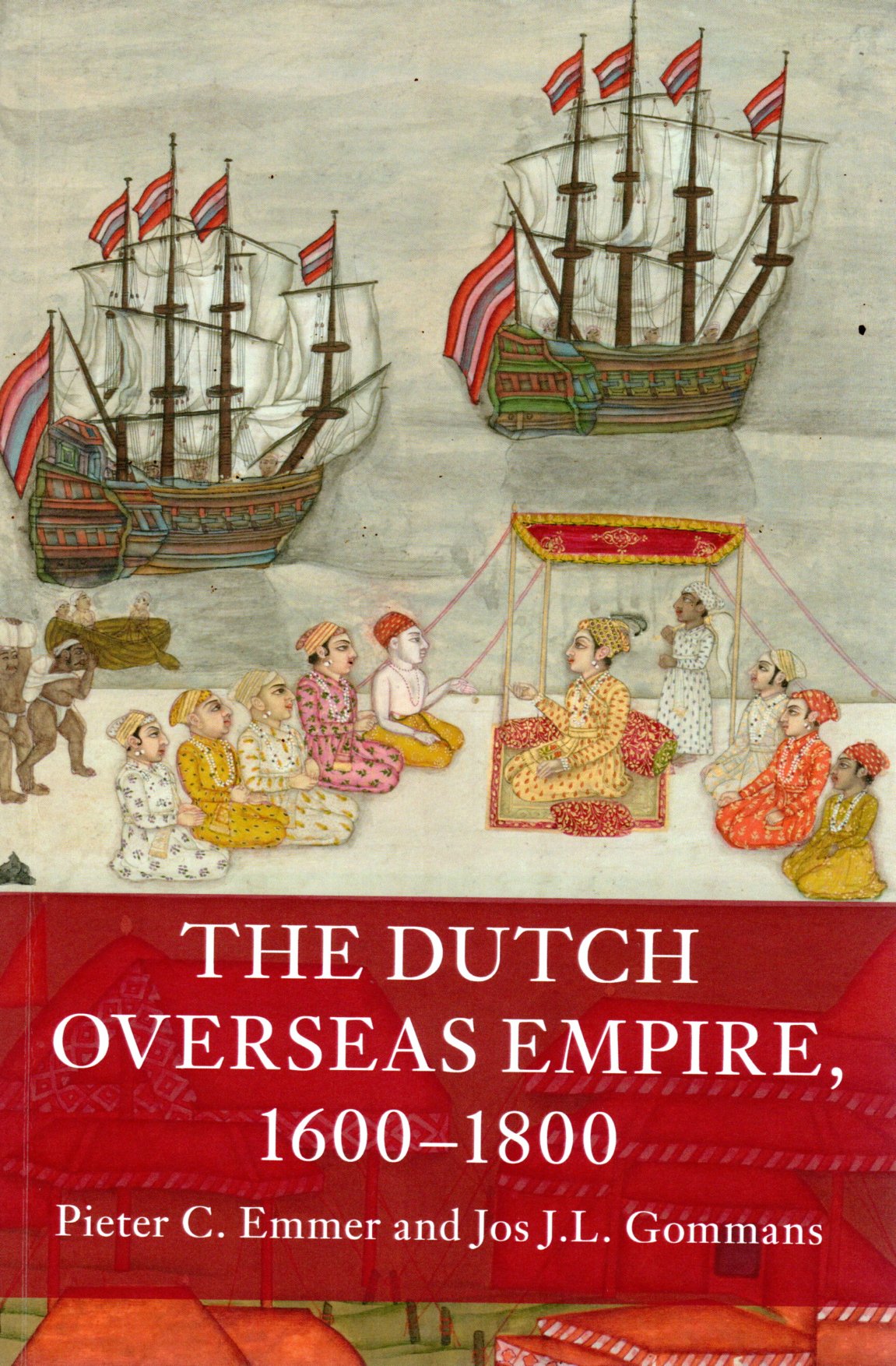
Pieter C. Emmer e Jos J.L. Gommans (2020). The Dutch Overseas Empire, 1600-1800. Cambridge University Press. 465 pp.
Resumo
How did the Dutch Empire compare with other imperial enterprises? And how was it experienced by the indigenous peoples who became part of this colonial power? At the start of the seventeenth century, the Dutch Republic emerged as the centre of a global empire that stretched along the edges of continents and connected societies surrounding the Atlantic and Indian Oceans. In the Dutch Empire, ideas of religious tolerance and scientific curiosity went hand in hand with severe political and economic exploitation of the local populations through violence, monopoly and slavery. This pioneering history of the early modern Dutch Empire, over two centuries, for the first time provides a comparative and indigenous perspective on Dutch overseas expansion. Apart from discussing the impact of the Empire on the economy and society at home in the Dutch Republic, it also offers a fascinating window into the contemporary societies of Asia, Africa and the Americas and, through their interactions, on processes of early modern globalisation.
Cota na biblioteca do CHSC: 27-6-16
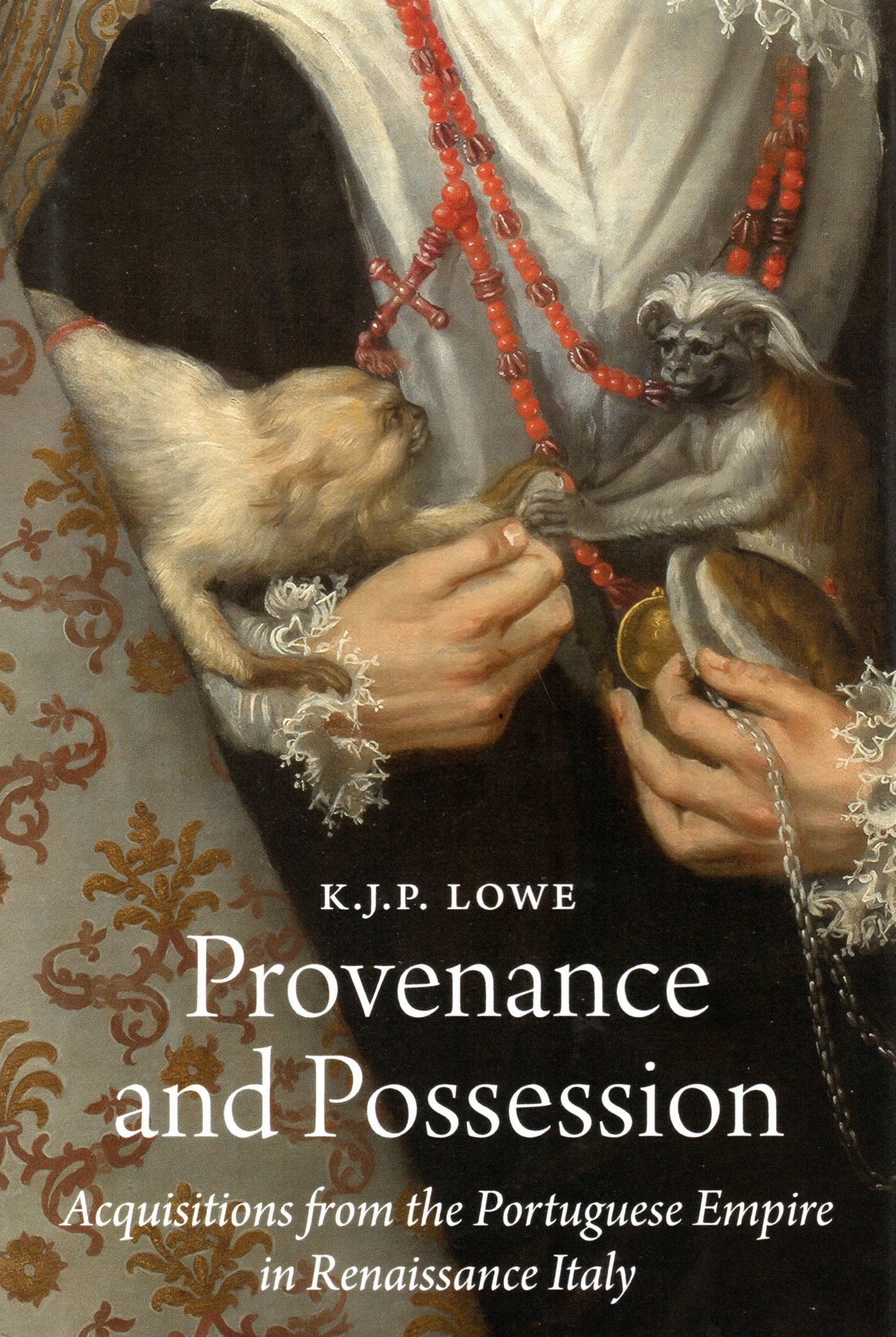
K. J. P. Lowe (2024). Provenance and Possession: Acquisitions from the Portuguese Empire in Renaissance Italy. Princeton University Press. 345 pp.
Resumo
In the fifteenth and sixteenth centuries, Renaissance Italy received a bounty of “goods” from Portuguese trading voyages—fruits of empire that included luxury goods, exotic animals and even enslaved people. Many historians hold that this imperial “opening up” of the world transformed the way Europeans understood the global. In this book, K.J.P. Lowe challenges such an assumption, showing that Italians of this era cared more about the possession than the provenance of their newly acquired global goods. With three detailed case studies involving Florence and Rome, and drawing on unpublished archival material, Lowe documents the myriad occasions on which global knowledge became dissociated from overseas objects, animals and people. Fundamental aspects of these imperial imports, including place of origin and provenance, she shows, failed to survive the voyage and make landfall in Europe. Lowe suggests that there were compelling reasons for not knowing or caring about provenance, and concludes that geographical knowledge, like all knowledge, was often restricted and not valued.
Examining such documents as ledger entries, journals and public and private correspondence as well as extant objects, and asking previously unasked questions, Lowe meticulously reconstructs the backstories of Portuguese imperial acquisitions, painstakingly supplying the context. She chronicles the phenomenon of mixed-ancestry children at Florence’s foundling hospital; the ownership of inanimate luxury goods, notably those possessed by the Medicis; and the acquisition of enslaved people and animals. How and where goods were acquired, Lowe argues, were of no interest to fifteenth- and sixteenth-century Italians; possession was paramount.
Cota na biblioteca do CHSC: 28-6-6

Deborah Simonton (2023). Gender in the European Town. Ancien Regime to the Modern. London: Routledge. 416 pp.
Resumo
Moving from the mid-seventeenth century to the near present, this book marks physical and conceptual changes across European towns and examines how gender was implicated and imbricated in those changes.
As places which fostered and disseminated key social, economic, political and cultural developments, towns were central to the creation of gendered identities and the transmission of ideas across local, national and transnational boundaries. From 1650 to 2000, towns grew rapidly and responded to the needs for new infrastructures, physical reconfiguration and ideas of citizenship. Gender relations vary over space and time and are continually altering; such variation underlines the need for a thorough non- or even anti-essentialism. Drawing primarily on three themes of economy, civic identity and uses of space, the volume shows that urban development, and responses to it, is not gender neutral and thus argues for the fundamental importance of a gendered perspective.
Gender in the European Town is a useful resource for all students and scholars interested in urban history and its interaction with gender from 1650 to the present.
Cota na biblioteca do CHSC: 27-6-8

Michele Campopiano (2025). Storia dell’ambiente nel Medioevo. Natura, società, cultura. Roma: Carocci Editore. 176 pp.
Resumo
Nel Medioevo la vita era indissolubilmente legata alla natura, la cui percezione era però in continuo movimento. Piante, animali, corsi d’acqua: tutto l’ambiente era modificato dall’agire degli esseri umani, e a loro volta le trasformazioni della natura influenzavano la vita delle comunità. Il libro indaga questi mutamenti in relazione ai cambiamenti economici e sociali. Analizza come in quel periodo l’idea stessa di natura si sia modificata in relazione alle pratiche di sfruttamento dell’ambiente e alle trasformazioni ecologiche. Riflette sulle categorie culturali che definivano i confini tra l’umano e l’animale e tra il naturale e il soprannaturale. Esplora il modo in cui la cultura medievale rappresentò le interazioni fra società e ambiente e la posizione dell’essere umano nel cosmo.
Cota na biblioteca do CHSC: 27-6-12
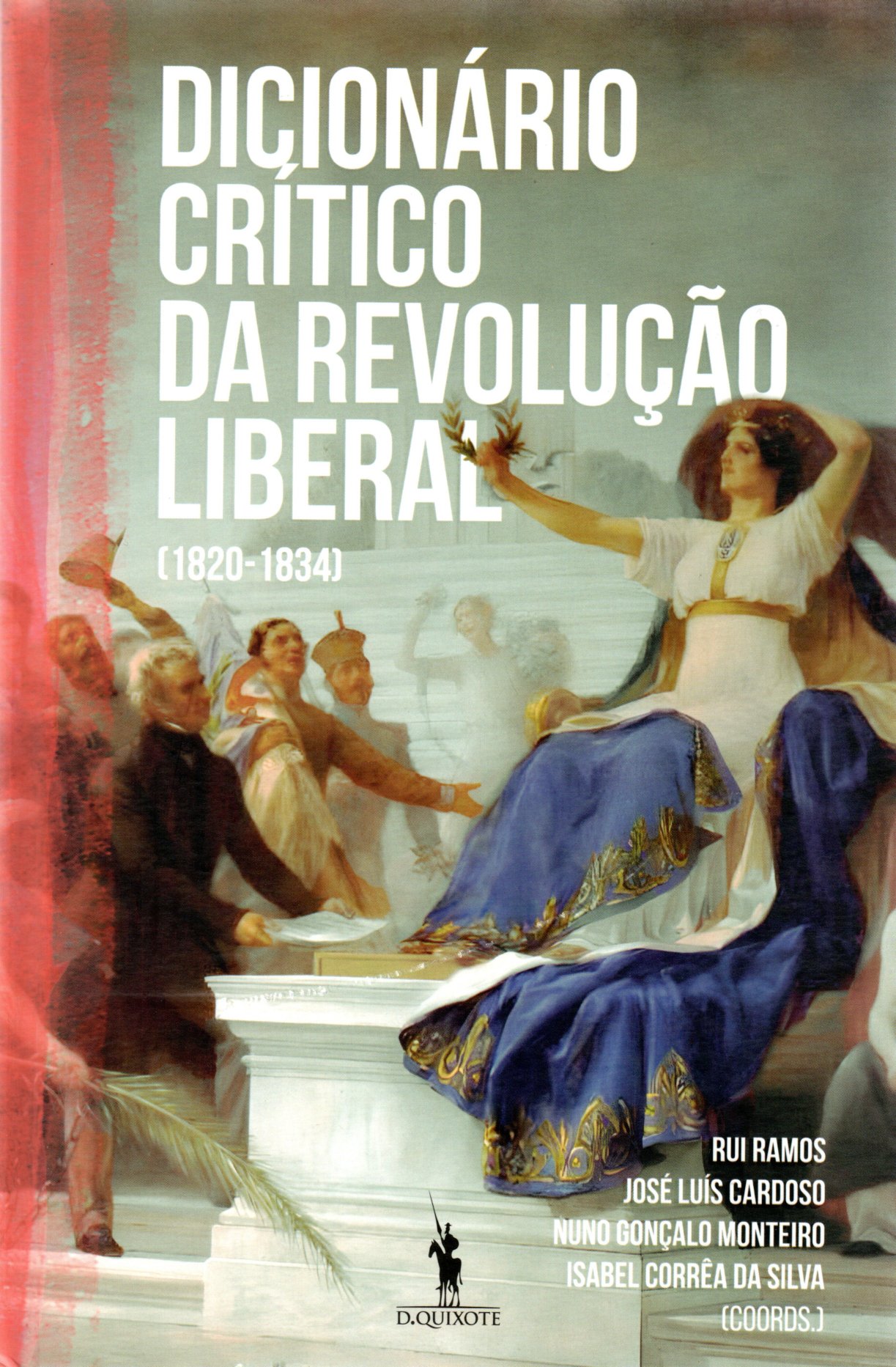
Isabel Corrêa da Silva, José Luís Cardoso, Nuno Gonçalo Monteiro, Rui Ramos (2025). Dicionário Crítico da Revolução Liberal (1820-1834). Lisboa: Dom Quixote. 1656 pp.
Resumo
«Em 2020 passaram 200 anos sobre o levantamento militar no Porto, que deu origem ao que depois se chamou a “revolução liberal”. Em meados do século XIX, o historiador Alexandre Herculano considerou-a a maior mudança política e social em Portugal desde a Idade Média. No século XX, a historiografia predominante tendeu a subestimar o impacto dos governos liberais e a exagerar todo o tipo de continuidades entre o Antigo Regime do século XVIII e o novo Estado Liberal do século XIX. Nos últimos quarenta anos, porém, a intensificação da investigação histórica, quer sobre o Estado Liberal, quer sobre o Antigo Regime, ajudou a reconsiderar a revolução liberal e restaurou, até certo ponto, a ideia de Herculano de que se tratou de uma enorme transformação política, cultural e social, e uma profunda rutura com o que tinha sido o passado português, e que como tal deve ser considerada no conhecimento e na memória histórica. É essa grande mudança histórica que pretende abarcar este Dicionário Crítico da Revolução Liberal (1820-1834).»
Cota na biblioteca do CHSC: 27-6-4
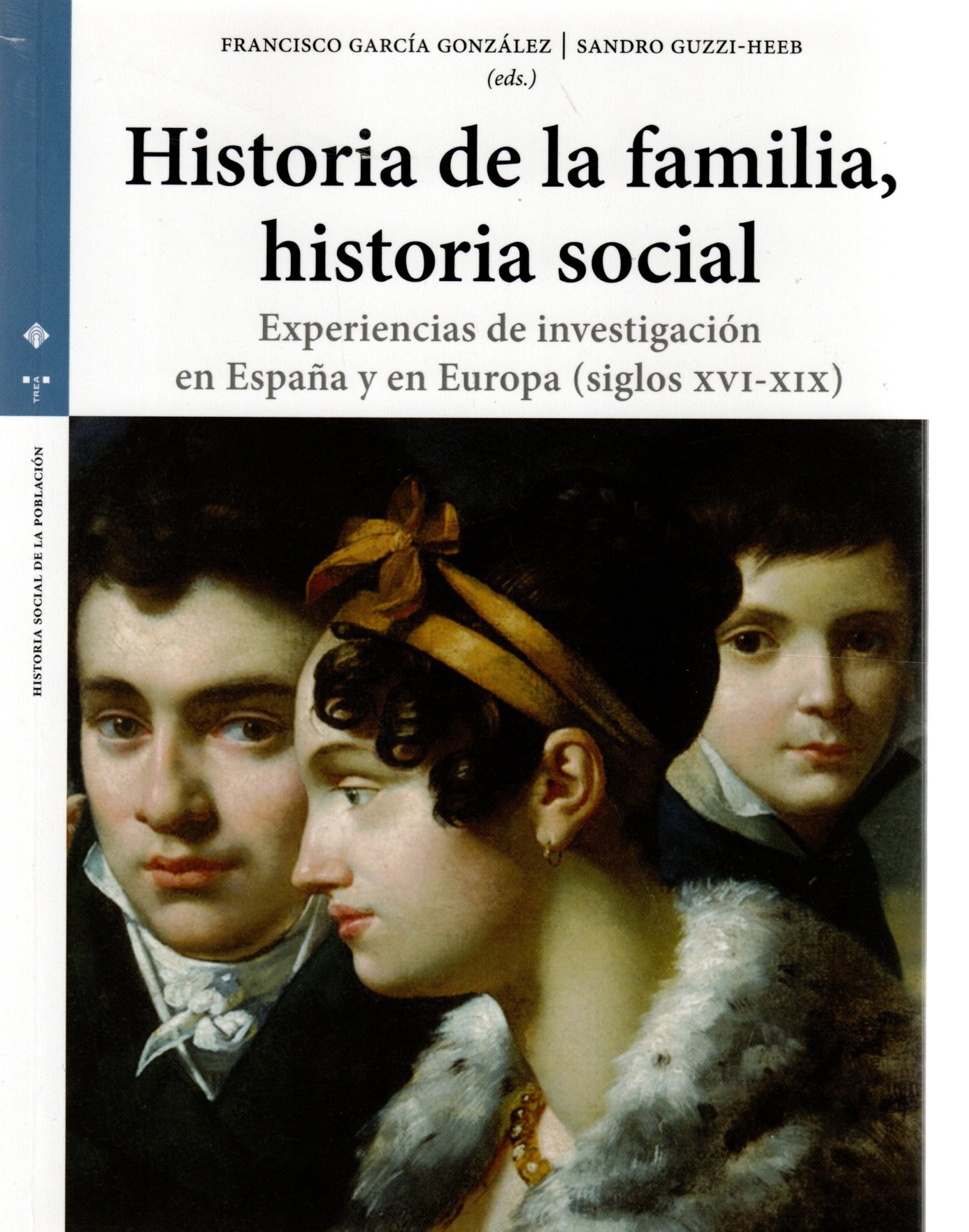
Francisco Garcia Gonzalez, Sandro Guzzi-Heeb (2023). Historia De La Familia, Historia Social. Experiencias de investigación en España y en Europa (siglos XVI-XIX). Ediciones Trea, S.L., Ediciones de la Universidad de Castilla-La Mancha. 808 pp.
Resumo
La historia de la familia como campo de investigación nació a principios de los años sesenta del siglo XX y desde entonces ha experimentado una importante evolución que ha modificado tanto su contenido como su orientación. Esta obra colectiva ofrece un balance de este ámbito de estudio en España y en varios países europeos incidiendo en sus particulares avances, así como en la riqueza y en la diversidad de sus enfoques actuales. Con la intención de fomentar el intercambio de planteamientos y de la transmisión de conocimientos referidos a diferentes territorios, el libro presenta una amplia muestra de experiencias de investigación entre los siglos XVI y XIX que constituyen una excelente expresión del desarrollo de la historia social en Europa a partir de los estudios de historia de la familia. La mayor atención prestada a la dimensión social de los fenómenos que concurren en ella ha supuesto multiplicar su potencialidad para la explicación y comprensión de las sociedades del pasado, contribuyendo de manera decisiva a la renovación y al impulso de nuevas formas de hacer historia dentro del panorama historiográfico internacional.
Cota na biblioteca do CHSC: 27-6-3
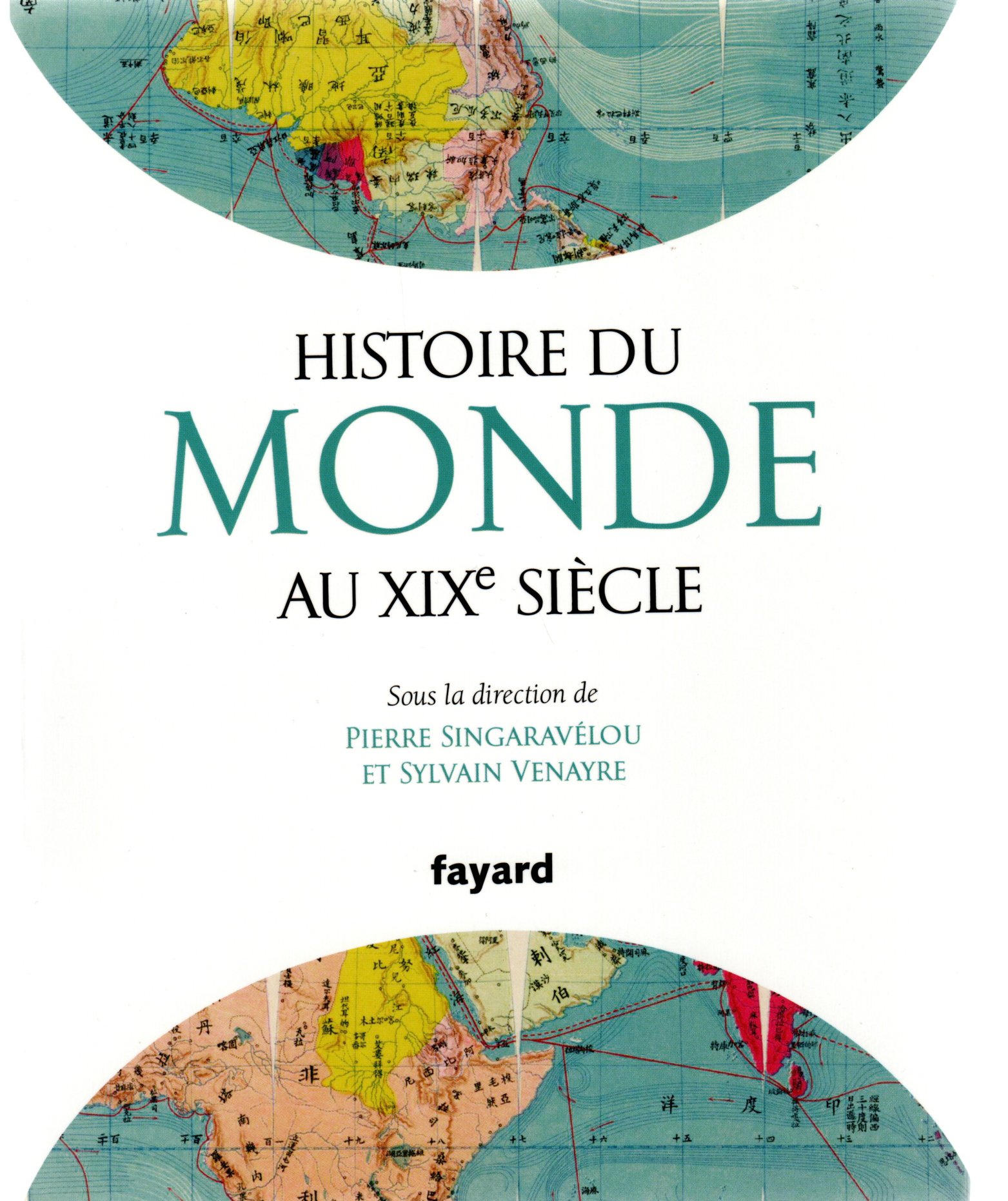
Sylvain Venayre, Pierre Singaravélou (2017). Histoire du Monde au XIXe siècle. Paris: Fayard. 740 pp.
Resumo
En Europe et dans les Amériques, le XIXe siècle a longtemps été défini comme l’époque de la «modernité», quand le rêve du progrès se mêlait à l’idée de révolution, et le désir de nouveauté à l’angoisse de l’accélération. Mais qu’en est-il lorsque, abandonnant l’étalon de l’Occident et optant pour l’échelle du monde, on change de point de vue?
Ce livre, «monstrueux et discordant», pour reprendre les mots par lesquels Michelet désignait sa propre Histoire du XIXe siècle, veut faire entendre les voix d’un passé pluriel. Car le monde est avant tout l’objet d’expériences contrastées pour ceux qui y vivent, et auxquelles cette somme convie le lecteur.
Elle le guide à travers les circulations de cette ère nouvelle, des migrations à l’expansion coloniale, conséquences des mutations rapides des transports, de l’industrie ou des sciences. Et à y regarder de près, on s’aperçoit que la mondialisation ne fut pas un processus univoque d’occidentalisation.
Elle le conduit au fil des «temps du monde» scandés par des événements qui résonnèrent à l’échelle globale, de l’indépendance d’Haïti (1804) à la révolution chinoise (1911), de l’épidémie de choléra (1817) à la révolte des cipayes (1857).
Elle l’entraîne au cœur d’un «magasin du monde» qu’approvisionnent bibelots, cartes, tatouages, fez, ivoire, opium, dévoilant des processus historiques qui affectent le monde entier, tout en installant le lointain dans l’intime et le quotidien.
Elle le transporte dans les «provinces du monde» indienne, sud-américaine, ottomane, européenne, etc., ces laboratoires qui permettent de décentrer notre regard, et révèlent tout autant la grande diversité de la planète que l’existence de «modernités» alternatives.
Attestant à la fois les dynamiques d’intégration mondiale et une exacerbation des identités, cette Histoire du monde au XIXe siècle, qui réunit les contributions de près de cent historiennes et historiens, nous laisse une certitude: celle d’être alors devenus, ensemble, et pour la première fois, contemporains.
Cota na Biblioteca do CHSC: 27-6-2
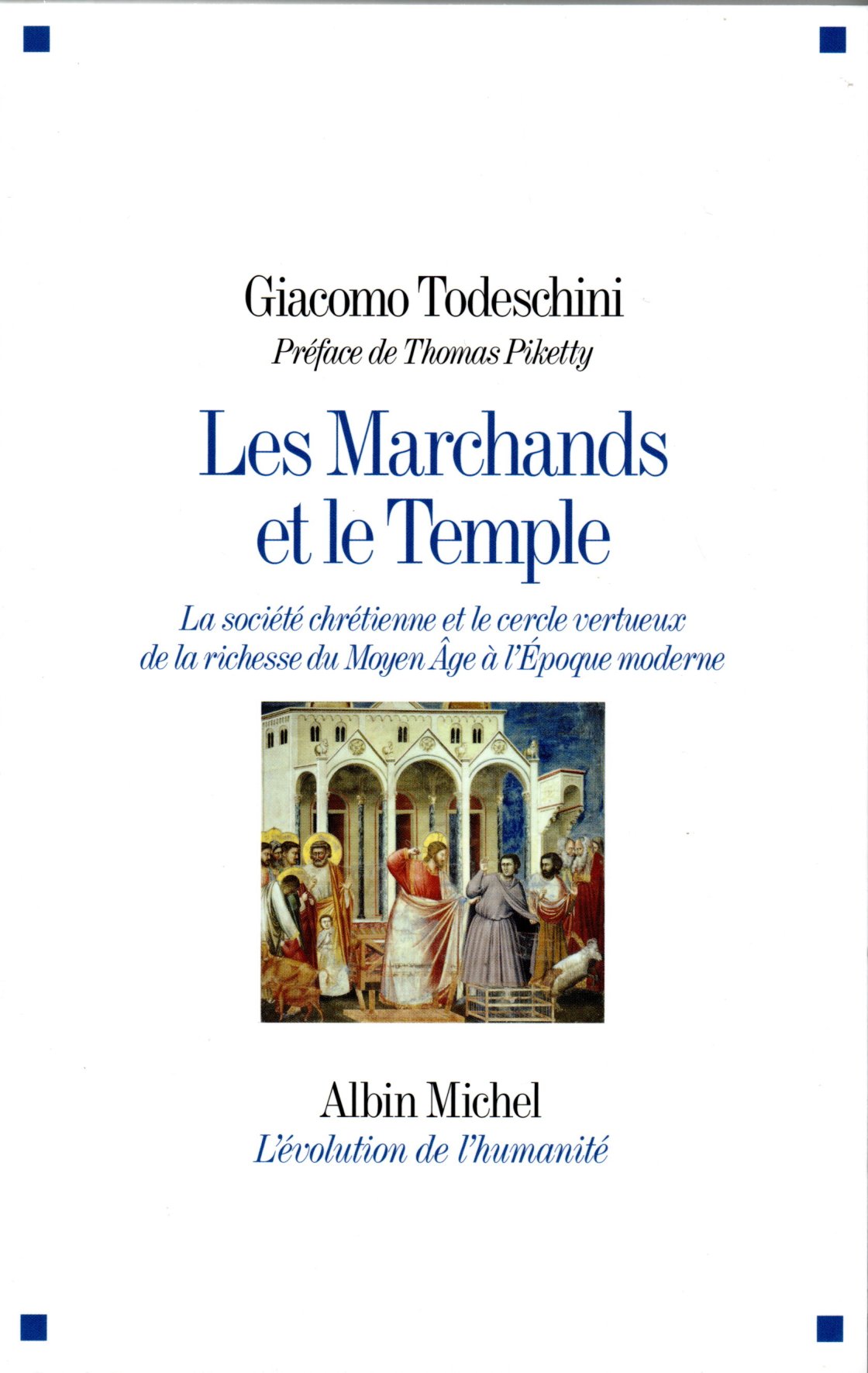
Todeschini, G., Piketty, T., Giordano, I., & Arnoux, M. (2017). Les Marchands et le Temple: La société chrétienne et le cercle vertueux de la richesse du Moyen Âge à l’Époque moderne. Albin Michel. 466 pp.
Resumo
A Idade Média cristã, hostil ao dinheiro, é frequentemente considerada como desprovida de pensamento econômico, uma vez que tais ideias só poderiam emergir no mundo secularizado possibilitado pela Reforma. Mas e se essa convicção amplamente difundida for falsa? E se os processos econômicos estivessem no cerne do pensamento medieval? Ouvindo monges, bispos, frades mendicantes e acadêmicos, Giacomo Todeschini percorre os caminhos do pensamento europeu entre a Antiguidade e a era moderna, revelando um mundo intelectual profundamente engajado com as questões espirituais, morais e políticas suscitadas pela circulação da riqueza, sua criação, distribuição, uso e controle. A economia cristã que ele apresenta, com suas controvérsias e consensos, permeia toda a vida da comunidade dos fiéis e contribui para as dinâmicas de exclusão (dos judeus, hereges e pobres) que moldaram a sociedade europeia, conferindo-lhe tanto solidariedade quanto brutalidade.
Esta obra revela os laços profundos que uniram, nas sociedades medievais, religião e economia, riqueza material e espiritualidade. Ao fazê-lo, dirige-se a todos que desejam compreender por que e como nasceu uma “ciência” econômica.
Cota na Biblioteca do CHSC: 25-6-32
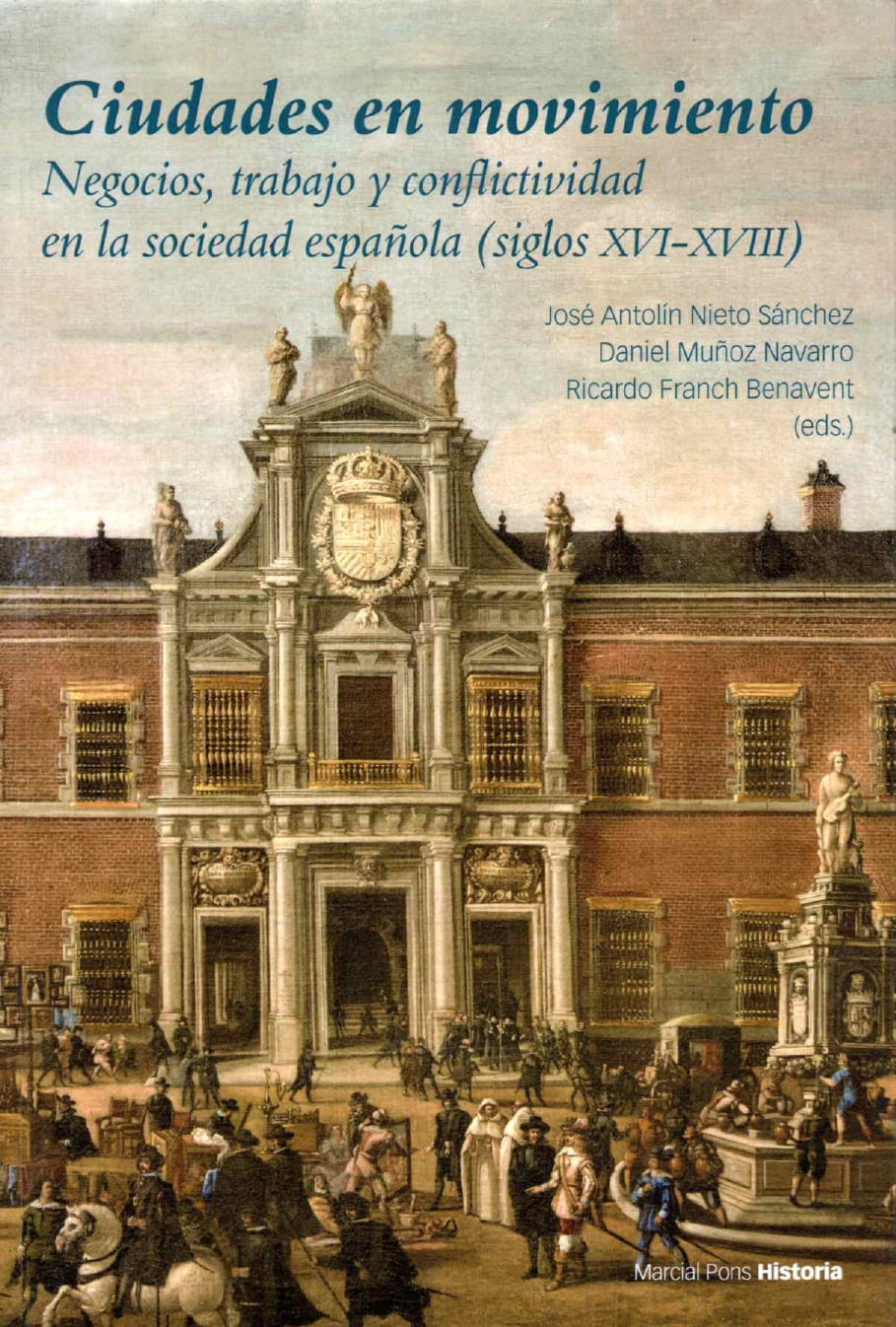
Nieto Sánchez, J. A., Muñoz Navarro, D., & Franch Benavent, R. (2023). Ciudades en movimiento: negocios, trabajo y conflictividad en la sociedad española, siglos XVI-XVIII. Madrid: Marcial Pons, Ediciones de Historia. 432 pp.
Resumo
La hegemonía ostentada por el mundo urbano en la sociedad actual sienta sus bases en el proceso de urbanización que se produjo entre los siglos XVI y XVIII. El crecimiento de las capitales políticas y las ciudades marítimas y portuarias dio lugar al surgimiento de grandes metrópolis que extendieron su influencia sobre el mundo rural circundante y estimularon la transformación del sistema social del Antiguo Régimen. El carácter dinámico de las ciudades de la época moderna constituye el eje fundamental del presente libro, que se centra en el análisis de las transformaciones sociales generadas por el crecimiento de Madrid y las ciudades del área mediterránea. Los estudios realizados se han centrado en tres aspectos fundamentales: la relación entre el abastecimiento y la mejora de las infraestructuras urbanas y el mundo de los negocios; el análisis de las relaciones laborales, las formas de organización y reproducción de los oficios y los canales de difusión del saber artesanal; y los conflictos surgidos tanto en las ciudades como en sus áreas de influencia, examinando su diversa tipología y los mecanismos de control y coerción que se utilizaron para su represión.
Cota na Biblioteca do CHSC: 25-6-33
- The Portuguese Restoration of 1640 and Its Global Visualization11 de Dezembro de 2024
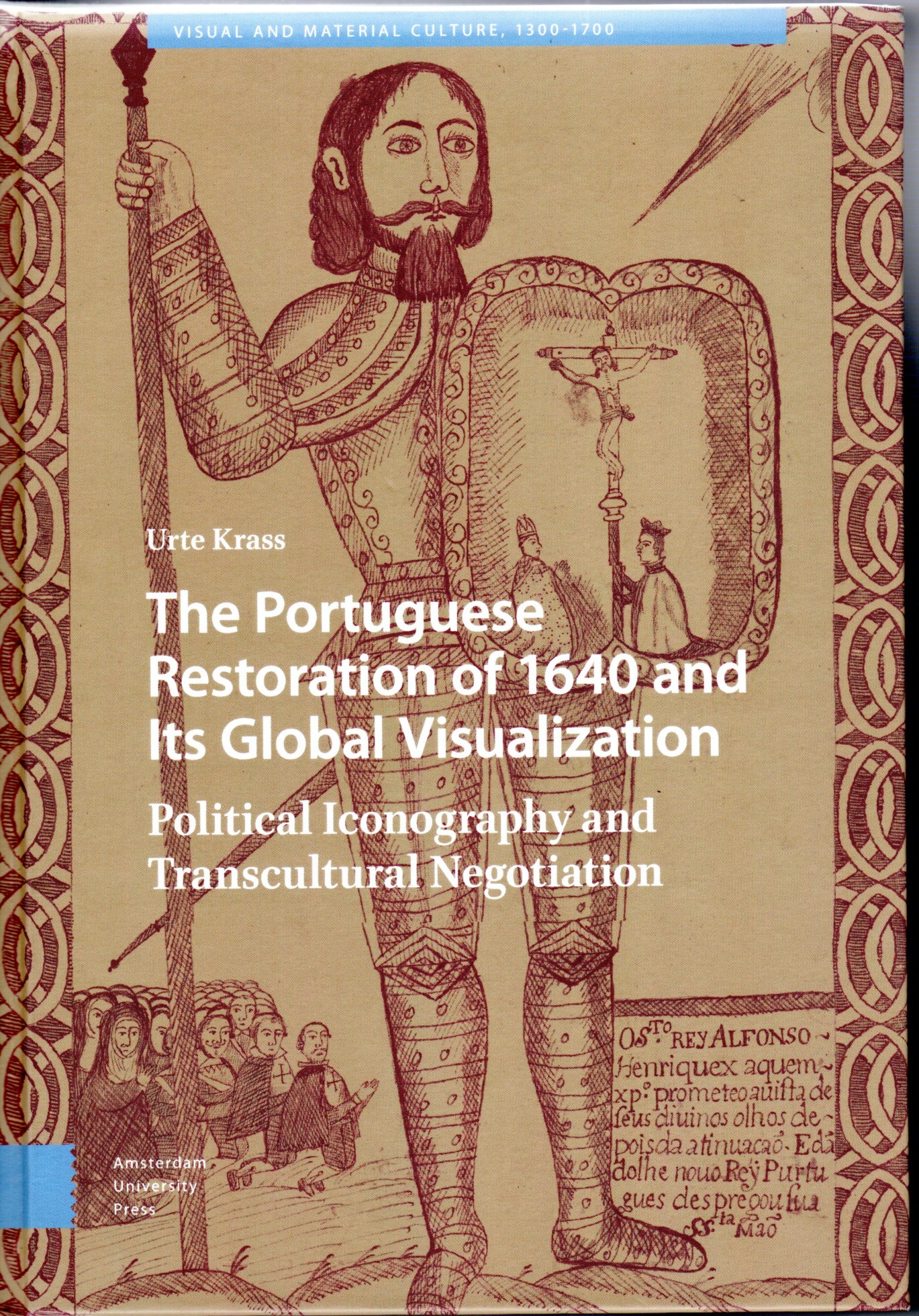
Krass, U. (2023). The Portuguese Restoration of 1640 and Its Global Visualization: Political Iconography and Transcultural Negotiation. Amsterdam: Amsterdam University Press. 508 pp.
Resumo
The Portuguese Restoration of 1640 ended the dynastic union of Portugal and Spain. This book pioneers in reconstructing the global image discourse related to the event by bringing together visualizations from three decades and four continents. These include paintings, engravings, a statue, coins, emblems, miniatures, a miraculous crosier and other regalia, buildings, textiles, a castrum doloris, drawings, and ivory statues. Situated within the academic field of visual studies, the book interrogates the role of images and depictions before, during, and after the overthrow and how they functioned within the intercontinental communication processes in the Portuguese Empire. The results challenge the conventional notion of center and periphery and reveal unforeseen entanglements as well as an unexpected agency of imagery from the remotest regions under Portuguese control. The book breaks new ground in linking the field of early modern political iconography with transcultural art history and visual studies.
Cota na Biblioteca do CHSC: 25-6-20
- Strangers Within: The Rise and Fall of the New Christian Trading Elite11 de Dezembro de 2024
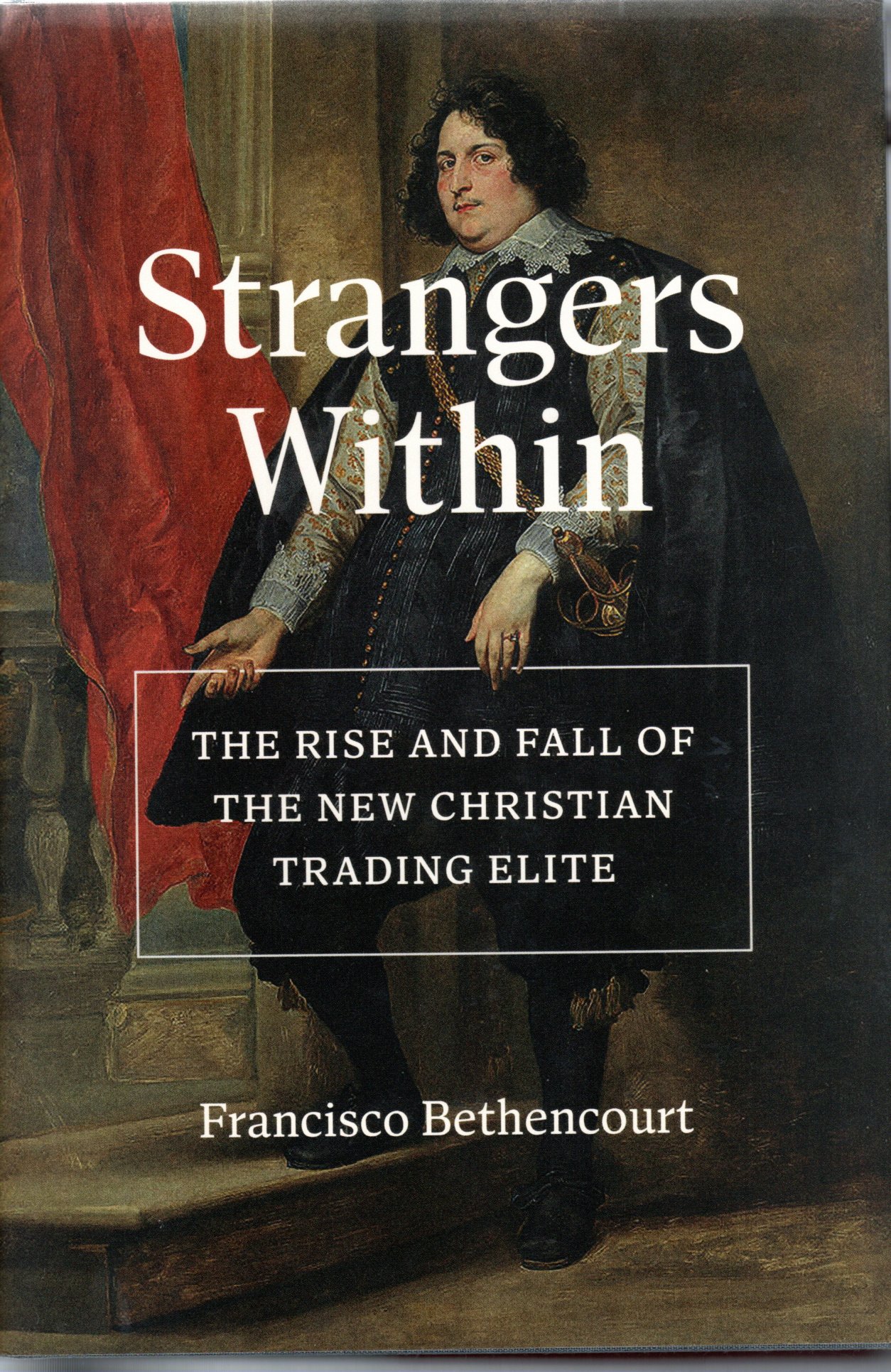
Bethencourt, F. (2024). Strangers Within: The Rise and Fall of the New Christian Trading Elite. Oxford: Princeton University Press. 602 pp.
Resumo
In Strangers Within, Francisco Bethencourt provides the first comprehensive history of New Christians, the descendants of Jews forced to convert to Catholicism in late medieval Spain and Portugal. Bethencourt estimates that there were around 260,000 New Christians by 1500—more than half of Iberia’s urban population. The majority stayed in Iberia but a significant number moved throughout Europe, Africa, the Middle East, coastal Asia and the New World. They established Sephardic communities in North Africa, the Ottoman Empire, Italy, Amsterdam, Hamburg and London. Bethencourt focuses on the elite of bankers, financiers and merchants from the fifteenth to the eighteenth centuries and the crucial role of this group in global trade and financial services. He analyses their impact on religion (for example, Teresa de Ávila), legal and political thought (Las Casas), science (Amatus Lusitanus), philosophy (Spinoza) and literature (Enríquez Gomez).
Drawing on groundbreaking research in eighteen archives and library manuscript departments in six different countries, Bethencourt argues that the liminal position in which the New Christians found themselves explains their rise, economic prowess and cultural innovation. The New Christians created the first coherent legal case against the discrimination of a minority singled out for systematic judicial inquiry. Cumulative inquisitorial prosecution, coupled with structural changes in international trade, led to their decline and disappearance as a recognizable ethnicity by the mid-eighteenth century. Strangers Within tells an epic story of persecution, resistance and the making of Iberia through the oppression of one of the most powerful minorities in world history. Packed with genealogical information about families, their intercontinental networks, their power and their suffering, it is a landmark study.
Cota na Biblioteca do CHSC: 25-6-23
- Procesos inquisitoriales de judeoconversas en Aragón (1484-1492)11 de Dezembro de 2024
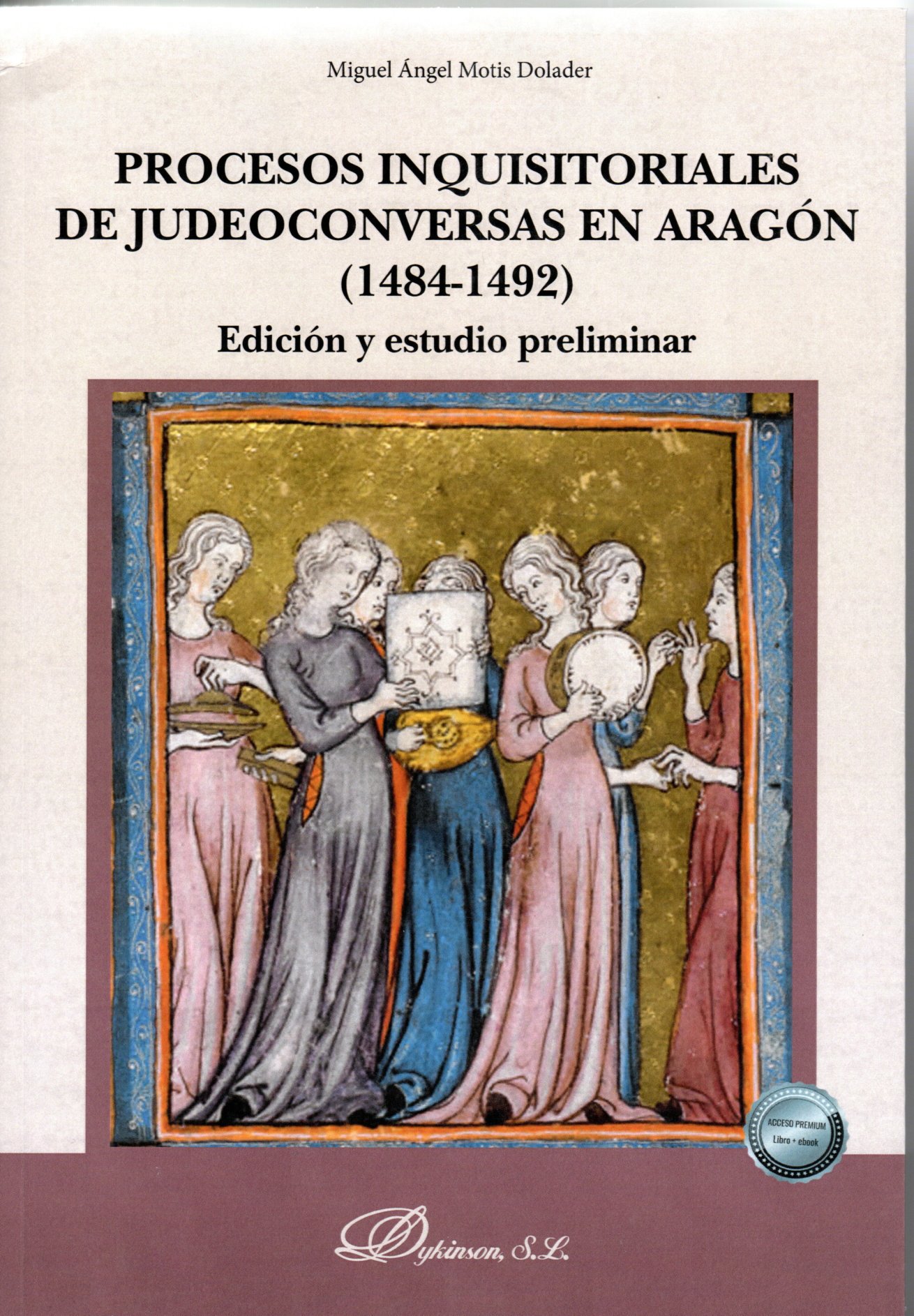
Motis Dolader, M. Á. (2024). Procesos inquisitoriales de judeoconversas en Aragon:(1484-1492) edición y estudio preliminar. Madrid, Dykinson. 437 pp.
Resumo
La presente colección documental recopila veinticinco procesos inquisitoriales, en su inmensa mayoría inéditos, instruidos entre los años 1484 y 1492 –en la fase de implantación del Santo Oficio–, a mujeres que vivieron en Aragón, y que en el momento de su procesamiento tuvieron como nexo en común su condición de judeoconversas viudas, de modo que vivieron una triple marginalidad. Dichos textos configuraron los cimientos de mi tesis doctoral en Antropología Social y Cultural, disciplina que aporta un valioso arsenal heurístico y hermenéutico para profundizar en sus vidas y vivencias, publicada bajo el título Vivencias, Emociones y Per files femeninos. Judeoconversas e Inquisición en Aragón en el siglo XV. Dichas fuentes han sido transcritas en su práctica totalidad, pese a las dificultades jurídicas y diplomáticas que entraña, como sucede con la documentación procesal en general, porque nos aportan numerosos prismas sobre la compleja realidad personal. Son un punto de partida en la reconstrucción de microhistorias y biografías de mujeres anónimas, a partir de la información, en ocasiones fragmentaria, aportada en los sumarios, vinculando su trayectoria individual con la social y con la colectividad a la que pertenecen, sobre cuyos sentimientos y aspiraciones suele proyectarse una sombra de silencio en una sociedad patriarcal. Su análisis, asimismo, permite un acercamiento a los perfiles e identidades de las judeoconversas en su contexto cultural, social, familiar, sororal, emocional y creencial, al comportarse como narraciones de vida, biografías sociales o egodocuments.
Cota na Biblioteca do CHSC: 25-6-26
- Across the Green Sea: Histories from the Western Indian Ocean05 de Dezembro de 2024
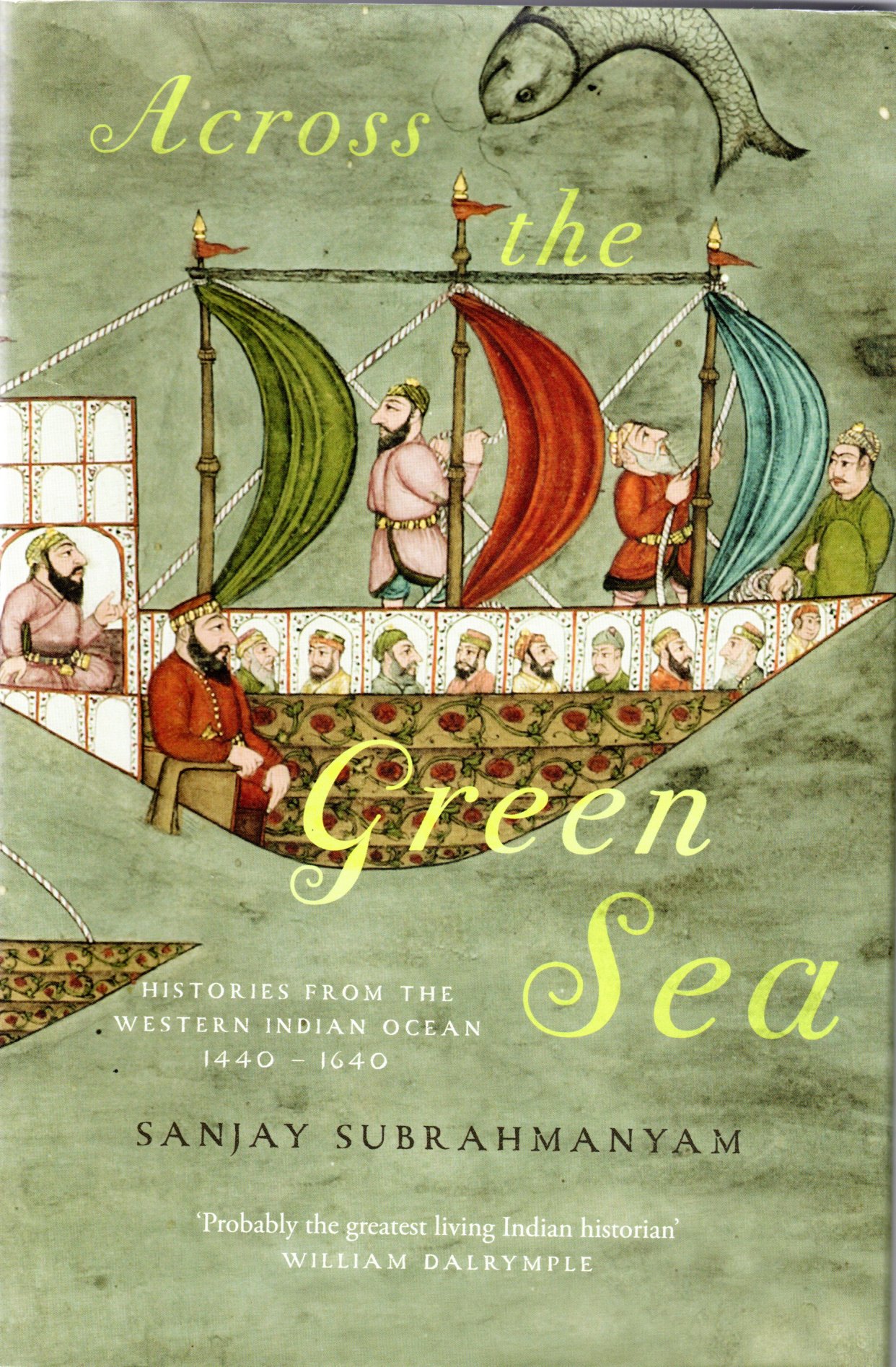
Subrahmanyam, S. (2024). Across the Green Sea: Histories from the Western Indian Ocean, 1440-1640. University of Texas Press.
Resumo
Beginning in the mid-fifteenth century, the regions bordering the western Indian Ocean—“the green sea,” as it was known to Arabic speakers—had increasing contact through commerce, including a slave trade, and underwent cultural exchange and transformation. Using a variety of texts and documents in multiple Asian and European languages, Across the Green Sea looks at the history of the ocean from a variety of shifting viewpoints: western India; the Red Sea and Mecca; the Persian Gulf; East Africa; and Kerala. Sanjay Subrahmanyam sets the scene for this region starting with the withdrawal of China’s Ming Dynasty and explores how the western Indian Ocean was transformed by the growth and increasing prominence of the Ottoman Empire and the continued spread of Islam into East Africa. He examines how several cities, including Mecca and the vital Indian port of Surat, grew and changed during these centuries, when various powers interacted until famines and other disturbances upended the region in the seventeenth century. Rather than proposing an artificial model of a dominant center and its dominated peripheries, Across the Green Sea demonstrates the complexity of a truly dynamic and polycentric system through the use of connected histories, a method pioneered by Subrahmanyam himself.
Cota na Biblioteca do CHSC: 25-6-15
- Refugiados em Portugal no Século XX15 de Novembro de 2024
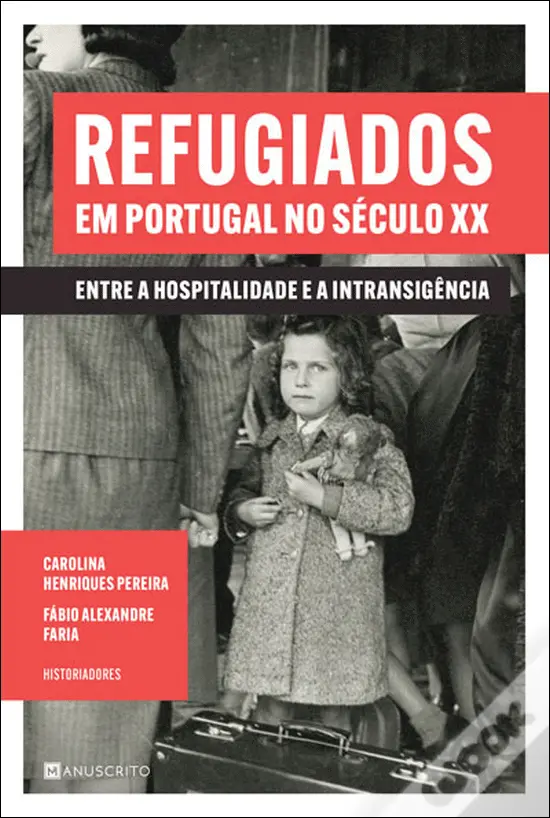
Pereira, C. H. ; Faria, F. A. (2024). Refugiados em Portugal no século XX: entre a hospitalidade e a intransigência. Manuscrito. 238 pp.
Resumo
Eventos bélicos de grande dimensão, como a Primeira Guerra Mundial, a Guerra Civil de Espanha ou a Segunda Guerra Mundial, e a ascensão de regimes autoritários na Europa obrigaram milhões de pessoas a sair dos seus países e a procurar acolhimento noutros estados. Apesar de ser um país periférico e de pequena dimensão, Portugal teve um papel central na história dos refugiados durante o século XX. No entanto, as reações e atitudes dos governos e da população portuguesa foram diferentes consoante o regime vigente (Monarquia Constitucional, Primeira República, Ditadura Militar e Estado Novo), o contexto internacional ou a composição das vagas de refugiados. Privilegiando sobretudo a ordem e a segurança, Portugal mostrou-se recetivo e acolhedor quando entendeu que os refugiados não representavam perigo, mas manteve uma postura mais intransigente, restritiva e repressiva sempre que considerou os refugiados uma ameaça para o regime e o país. Neste olhar para um passado mais atual do que nunca, os historiadores Carolina Henriques Pereira e Fábio Alexandre Faria mostram-nos como Portugal, entre as décadas de 1900 e 1970, foi porto de esperança para milhares de deslocados de guerra e refugiados, embora nem sempre com hospitalidade generalizada.
Cota na Biblioteca do CHSC: 25-6-12
- Na Teia da Aranha15 de Novembro de 2024
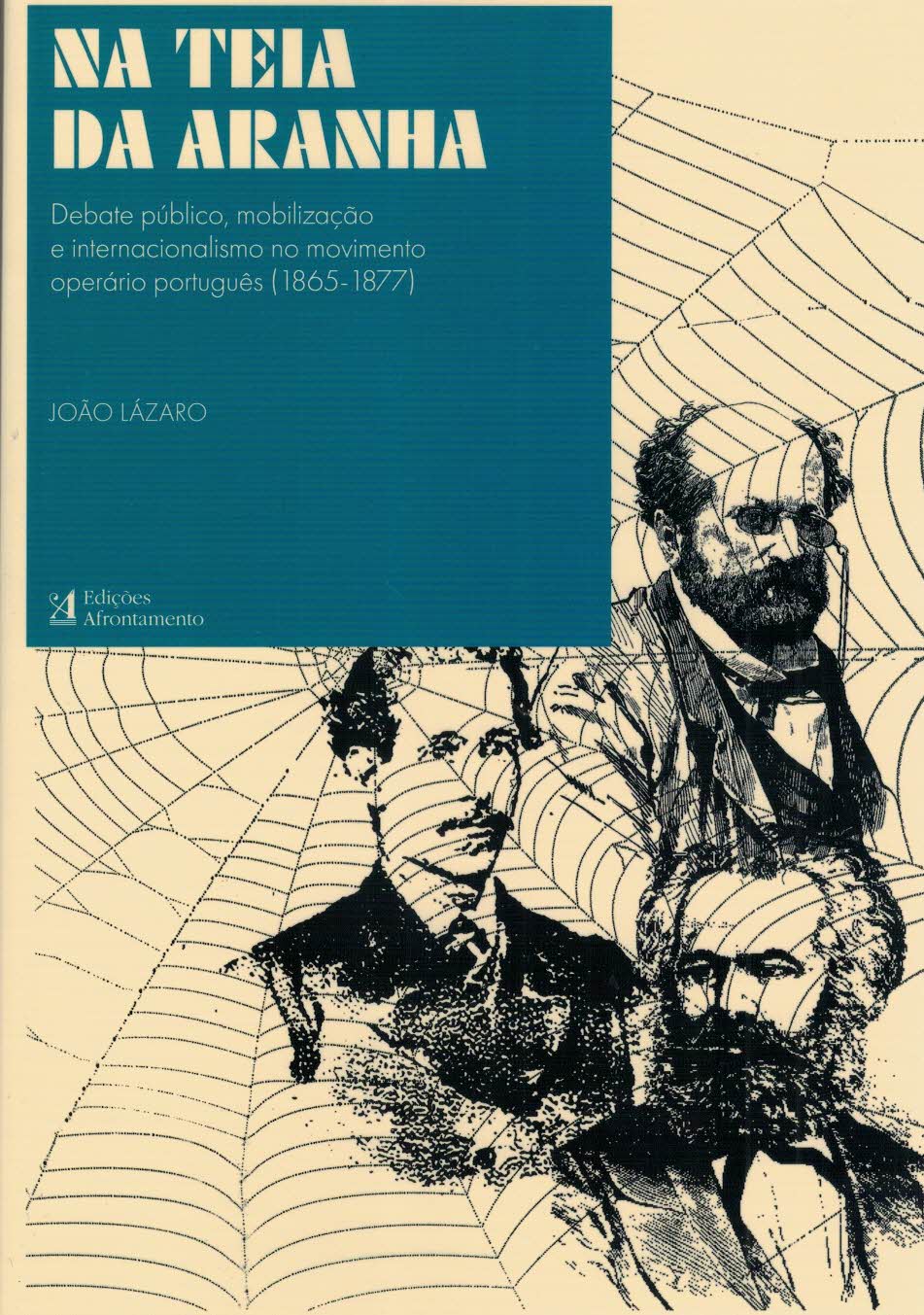
Lázaro, J. (2024). Na Teia da Aranha: debate público, mobilização e internacionalismo no movimento operário português (1865-1877). Edições Afrontamento. 332 pp.
Resumo
Ao estabelecer a baliza cronológica entre o Primeiro Congresso Social (1865) e o Primeiro Congresso dos Operários Socialistas de Portugal (1877), João Lázaro consegue identificar as diversas ruturas e mobilizações nas organizações dos trabalhadores, o impacto na esfera pública e abordar a correspondência entre Portugal, Karl Marx e Engels. O autor desenvolve uma interessante tese sobre o surgimento de uma teia de aranha internacionalista em Portugal que coloca desafios transnacionais aos socialistas. Como salienta no prefácio a professora Fátima Sá: «O livro que aqui se apresenta é um livro que fazia falta. Fazia falta aos historiadores que trabalham sobre o século XIX, aos que estudam movimentos sociais, e, naturalmente, àqueles cujo foco é o movimento operário. Fazia falta, igualmente, ao chamado “leitor comum”, ou melhor, ao vasto universo dos leitores que, fora da academia, se interessam pela disciplina da história em geral e por estes temas em particular, sendo muitos vezes olimpicamente ignorados pelos historiadores».
Cota na Biblioteca do CHSC: 25-6-10
- Compilação de Elementos para o Estudo da Questão de Olivença15 de Novembro de 2024

SAMPAYO, Luiz Teixeira de (2001). Compilação de elementos para o estudo da questão de Olivença (Perda desta Praça e Diligências para a Reaver). [S.l.]: Grupo dos Amigos de Olivença. 384 pp.
Resumo
O presente trabalho de Luiz Teixeira de Sampayo (investigador, Embaixador e Secretário Geral do Ministério dos Negócios Estrangeiros) constitui uma exposição sucinta, mas muito bem documentada, sobre as diligências feitas pelas autoridades portuguesas, após o Congresso de Viena, para reaver a pose da Vila de Olivença e o seu termo, cedidas a Espanha pelo tratado de 6 de junho de 1801. Introdução do Embaixador José Calvet de Magalhães. Transcrição documental, notas, sumários, bibliografia e índices por Mário Rodrigues. Posfácio de Humberto Nuno de Oliveira.
Cota na Biblioteca do CHSC: 25-6-9
- ‘Black but Human’12 de Novembro de 2024
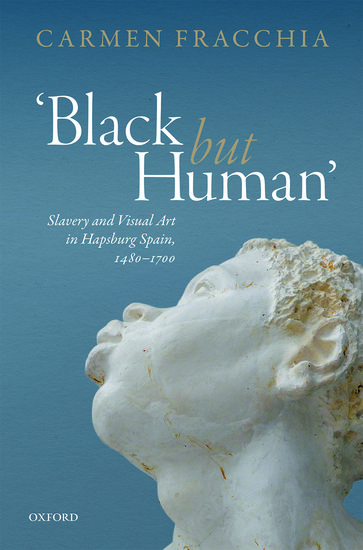
Fracchia, C. (2019). ‘Black But Human’: Slavery and Visual Art in Hapsburg Spain, 1480-1700. Oxford University Press. 232 pp.
Resumo
‘Black but Human’ is the first study to focus on the visual representations of African slaves and ex-slaves in Spain during the Hapsburg dynasty. The Afro-Hispanic proverb ‘Black but Human’ is the main thread of the six chapters and serves as a lens through which to explore the ways in which a certain visual representation of slavery both embodies and reproduces hegemonic visions of enslaved and liberated Africans, and at the same time provides material for critical and emancipatory practices by Afro-Hispanics themselves.
The African presence in the Iberian Peninsula between the late fifteenth century and the end of the seventeenth century was as a result of the institutionalization of the local and transatlantic slave trades. In addition to the Moors, Berbers and Turks born as slaves, there were approximately two million enslaved people in the kingdoms of Castile, Aragon and Portugal. The ‘Black but Human’ topos that emerges from the African work songs and poems written by Afro-Hispanics encodes the multi-layered processes through which a black emancipatory subject emerges and a ‘black nation’ forges a collective resistance. It is visually articulated by Afro-Hispanic and Spanish artists in religious paintings and in the genres of self-portraiture and portraiture. This extraordinary imagery coexists with the stereotypical representations of African slaves and ex-slaves by Spanish sculptors, engravers, jewellers, and painters mainly in the religious visual form and by European draftsmen and miniaturists, in their landscape drawings and sketches for costume books.
Cota na Biblioteca do CHSC: 25-6-5
- Black Saints in Early Modern Global Catholicism30 de Setembro de 2024

Rowe, E. K. (2019). Black saints in early modern global Catholicism. Cambridge University Press. 293 pp.
Resumo
From the sixteenth to the eighteenth centuries, Spanish and Portuguese monarchs launched global campaigns for territory and trade. This process spurred two efforts that reshaped the world: missions to spread Christianity to the four corners of the globe, and the horrors of the transatlantic slave trade. These efforts joined in unexpected ways to give rise to black saints. Erin Kathleen Rowe presents the untold story of how black saints – and the slaves who venerated them – transformed the early modern church. By exploring race, the Atlantic slave trade, and global Christianity, she provides new ways of thinking about blackness, holiness, and cultural authority. Rowe transforms our understanding of global devotional patterns and their effects on early modern societies by looking at previously unstudied sculptures and paintings of black saints, examining the impact of black lay communities, and analysing controversies unfolding in the church about race, moral potential, enslavement, and salvation.
Cota na Biblioteca do CHSC: 25-6-8
- Sacerdotisas voduns e rainhas do Rosário24 de Setembro de 2024
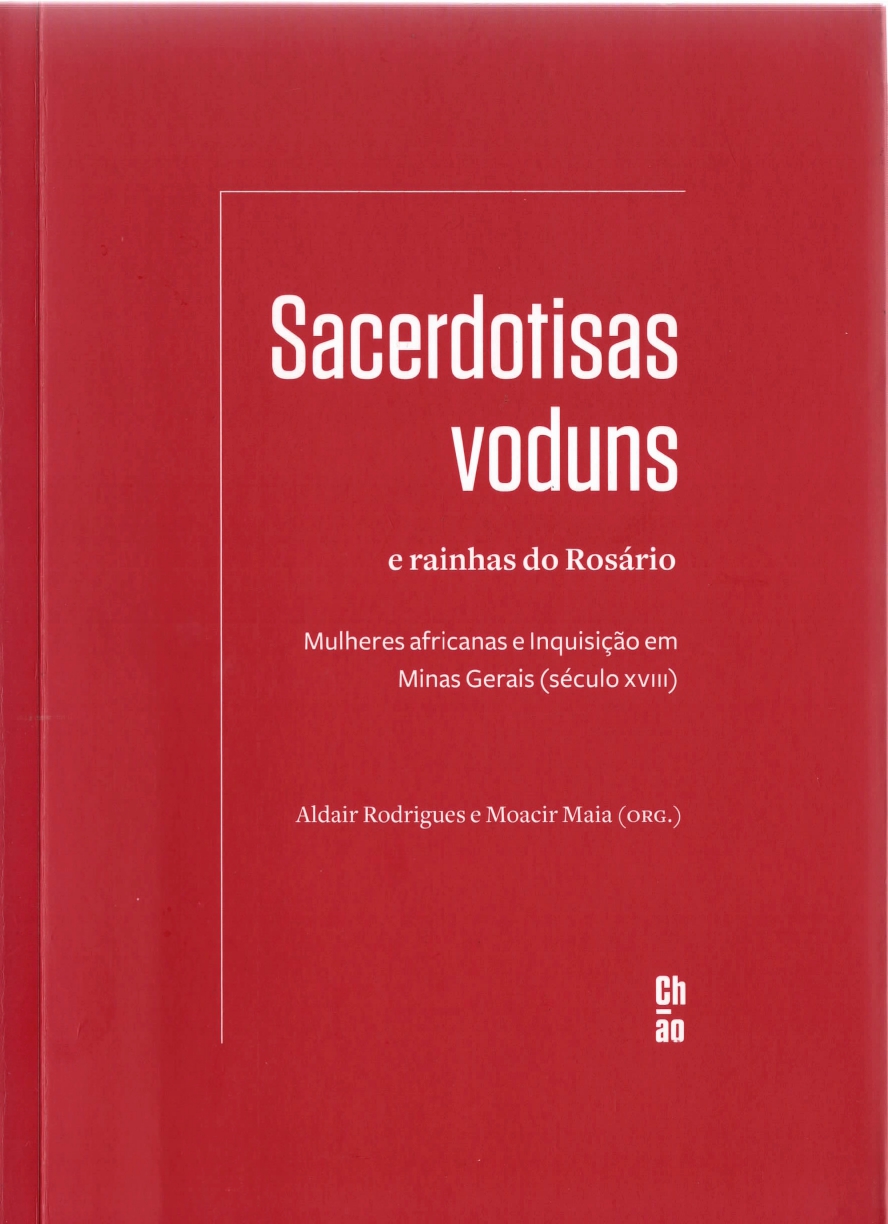
Rodrigues, A., & Maia, M. (Org.)(2023). Sacerdotisas voduns e rainhas do Rosário: Mulheres africanas e Inquisição em Minas Gerais (século XVIII). Chão Editora. 191 pp.
Resumo
Sacerdotisas voduns e rainhas do Rosário: mulheres africanas e Inquisição em Minas Gerais (século xviii) reúne transcrições de documentos inéditos sobre a vida e as crenças de mulheres africanas perseguidas no Brasil por forças militares e pela Inquisição. Essas mulheres pertenciam a grupos étnicos que habitavam a região da África ocidental chamada pelos portugueses de Costa da Mina. Escravizadas e trazidas para o Brasil, algumas se tornaram lideranças de comunidades negras na posição de sacerdotisas voduns (vodúnsis), ao mesmo tempo que exerciam cargos de juízas e rainhas da irmandade católica de Nossa Senhora do Rosário dos Pretos — a principal confraria negra mineira. Os manuscritos dos processos contra as sacerdotisas foram localizados em Portugal no Arquivo da Torre do Tombo, entre os códices do Tribunal da Inquisição de Lisboa. O primeiro, de 1747, descreve um complexo culto em Paracatu (mg) dedicado ao “Deus da Terra de Courá”. O segundo e o terceiro referem-se a Ângela Gomes, “mestra” de práticas rituais africanas na comarca de Ouro Preto, coroada como rainha do Rosário. O quarto, datado de 1759, oferece detalhes sobre as práticas de Teresa Rodrigues e Manoel mina na comarca de Sabará. Sacerdotisas voduns e rainhas do Rosário inclui também papéis preservados nos arquivos históricos de Minas Gerais. Embora registrados por agentes do Império português, os depoimentos reproduzidos nos processos desvelam a multiplicidade de vozes e das trajetórias de vida das mulheres africanas, evidenciando a ideologia e a violência do racismo religioso.
Cota na Biblioteca do CHSC: 25-6-4
- The Oxford History of Witchcraft and Magic24 de Setembro de 2024

Davies, O. (Ed.). (2023). The Oxford History of Witchcraft and Magic. Oxford University Press. 325 pp.
Resumo
This history provides a readable and fresh approach to the extensive and complex story of witchcraft and magic. Telling the story from the dawn of writing in the ancient world to the globally successful Harry Potter films, the authors explore a wide range of magical beliefs and practices, the rise of the witch trials, and the depiction of the Devil-worshipping witch. The book also focuses on the more recent history of witchcraft and magic, from the Enlightenment to the present, exploring the rise of modern magic, the anthropology of magic around the globe, and finally the cinematic portrayal of witches and magicians, from The Wizard of Oz to Charmed and Buffy the Vampire Slayer.
Cota na Biblioteca do CHSC: 25-6-3
- Sustentabilidade: um desafio coletivo24 de Setembro de 2024
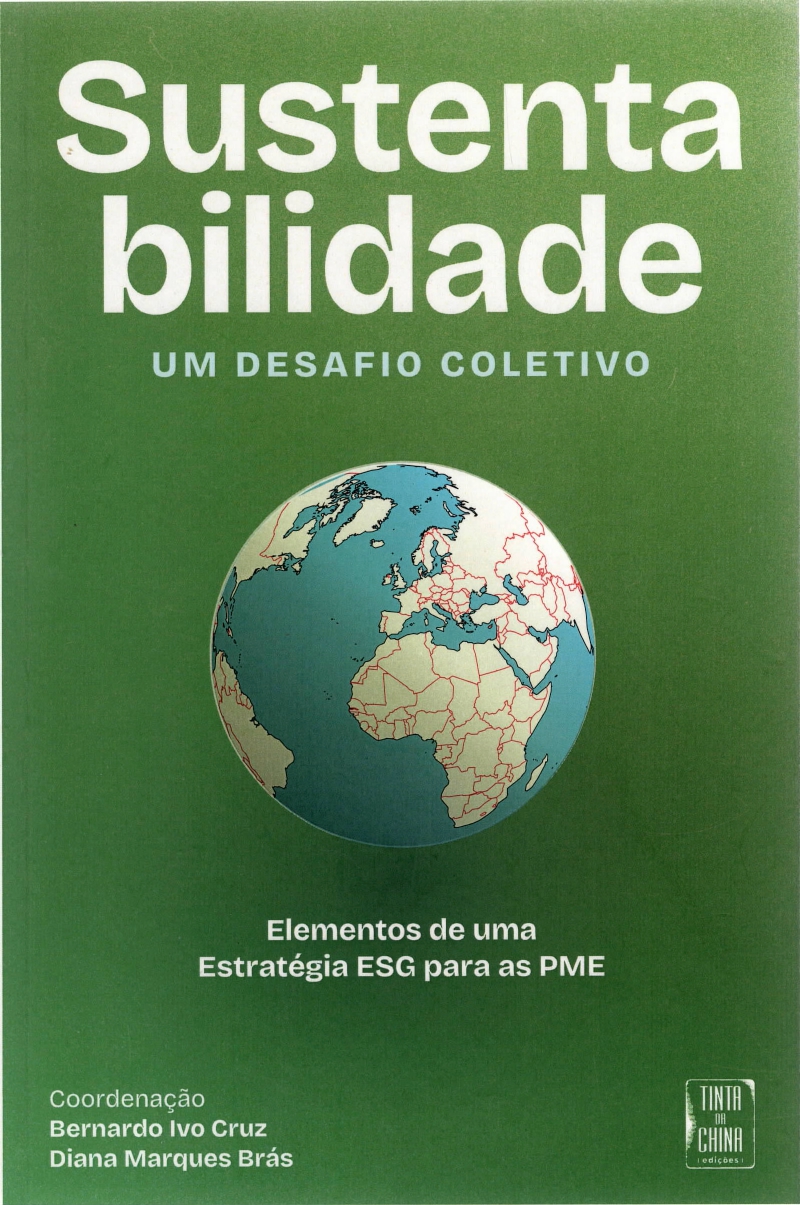
Cruz, B. L.; Brás, D. M. (2024). Sustentabilidade: um desafio coletivo. Lisboa : Tinta da China. 232 pp.
Resumo
O tecido empresarial português de média e pequena dimensão, do qual depende directamente cerca de 80% da força de trabalho em Portugal, por todas as pressões a que está sujeito, deve ser o maior mobilizador de esforços de cooperação e entreajuda com vista a um desenvolvimento mais sustentável. Um país mais próspero, capaz de criar mais riqueza, de ser mais equitativo e que promove um novo modelo de desenvolvimento económico, social e ambiental garante de um futuro saudável às gerações vindouras, só se consegue a partir de um esforço colectivo incluindo governos, comunidade científica, empresas, cidadãos, movimentos da sociedade civil e investidores. Às empresas pede‑se que se posicionem no sentido de garantir uma maior adaptação ao mercado, um incremento nos seus níveis de responsabilidade, que se mantenham competitivas e assumam como propósito servir o conjunto das suas partes interessadas — accionistas, clientes, colaboradores, consumidores e as comunidades em que operam. Estes são alguns dos elementos de base de uma Estratégia ESG (Environment, Social and Governance na sigla inglesa) para as PME que esta publicação procura apresentar.
Cota na Biblioteca do CHSC: 25-6-2
- Public Opinion and Political Contest in Late Medieval Paris24 de Setembro de 2024
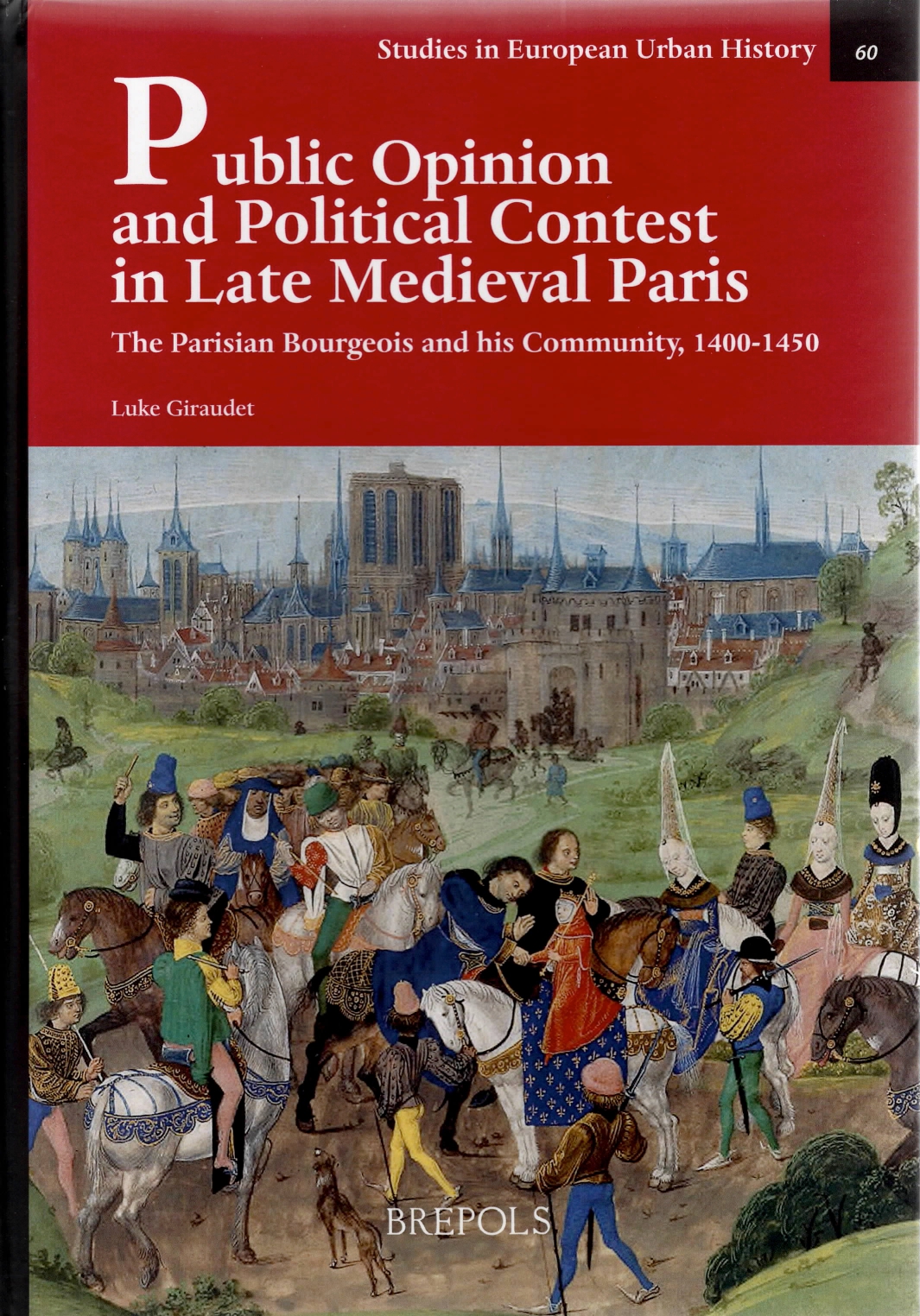
Giraudet, L. (2022). Public Opinion and Political Contest in Late Medieval Paris: The Parisian Bourgeois and His Community, 1400-50. Brepols Publishers. 327 pp.
Resumo
Public Opinion and Political Contest presents an important historiographical intervention regarding the emergence of larger political publics during the fifteenth century. The study analyses political interaction and public opinion in medieval Europe’s largest city through the lens of the only continuous narrative source compiled in Paris during the early fifteenth century, the well-known Journal d’un bourgeois de Paris. Examining one of the most turbulent periods in Paris’ history, which witnessed civil conflict and English occupation, the monograph contributes substantially to understandings of late medieval popular opinion conceptually and empirically, revealing Parisian groups bound by shared idioms and assumptions engaging with supralocal movements. Through an assessment of contemporary reactions to official communication, protest in public space, rumour and civic ceremony, the book presents a timely mirror to themes in flux today, addressing historiographical conclusions that have relegated premodern societies from considerations of the public sphere. As a result, this nuanced assessment of the Journal d’un bourgeois de Paris reveals how access to informational media and forums for discussion bound Parisians and framed a wider commentary upon political issues beyond the highest echelons of medieval society.
Cota na Biblioteca do CHSC: 25-6-1

Krass, U. (2023). The Portuguese Restoration of 1640 and Its Global Visualization: Political Iconography and Transcultural Negotiation. Amsterdam: Amsterdam University Press. 508 pp.
Resumo
The Portuguese Restoration of 1640 ended the dynastic union of Portugal and Spain. This book pioneers in reconstructing the global image discourse related to the event by bringing together visualizations from three decades and four continents. These include paintings, engravings, a statue, coins, emblems, miniatures, a miraculous crosier and other regalia, buildings, textiles, a castrum doloris, drawings, and ivory statues. Situated within the academic field of visual studies, the book interrogates the role of images and depictions before, during, and after the overthrow and how they functioned within the intercontinental communication processes in the Portuguese Empire. The results challenge the conventional notion of center and periphery and reveal unforeseen entanglements as well as an unexpected agency of imagery from the remotest regions under Portuguese control. The book breaks new ground in linking the field of early modern political iconography with transcultural art history and visual studies.
Cota na Biblioteca do CHSC: 25-6-20

Bethencourt, F. (2024). Strangers Within: The Rise and Fall of the New Christian Trading Elite. Oxford: Princeton University Press. 602 pp.
Resumo
In Strangers Within, Francisco Bethencourt provides the first comprehensive history of New Christians, the descendants of Jews forced to convert to Catholicism in late medieval Spain and Portugal. Bethencourt estimates that there were around 260,000 New Christians by 1500—more than half of Iberia’s urban population. The majority stayed in Iberia but a significant number moved throughout Europe, Africa, the Middle East, coastal Asia and the New World. They established Sephardic communities in North Africa, the Ottoman Empire, Italy, Amsterdam, Hamburg and London. Bethencourt focuses on the elite of bankers, financiers and merchants from the fifteenth to the eighteenth centuries and the crucial role of this group in global trade and financial services. He analyses their impact on religion (for example, Teresa de Ávila), legal and political thought (Las Casas), science (Amatus Lusitanus), philosophy (Spinoza) and literature (Enríquez Gomez).
Drawing on groundbreaking research in eighteen archives and library manuscript departments in six different countries, Bethencourt argues that the liminal position in which the New Christians found themselves explains their rise, economic prowess and cultural innovation. The New Christians created the first coherent legal case against the discrimination of a minority singled out for systematic judicial inquiry. Cumulative inquisitorial prosecution, coupled with structural changes in international trade, led to their decline and disappearance as a recognizable ethnicity by the mid-eighteenth century. Strangers Within tells an epic story of persecution, resistance and the making of Iberia through the oppression of one of the most powerful minorities in world history. Packed with genealogical information about families, their intercontinental networks, their power and their suffering, it is a landmark study.
Cota na Biblioteca do CHSC: 25-6-23

Subrahmanyam, S. (2024). Across the Green Sea: Histories from the Western Indian Ocean, 1440-1640. University of Texas Press.
Resumo
Beginning in the mid-fifteenth century, the regions bordering the western Indian Ocean—“the green sea,” as it was known to Arabic speakers—had increasing contact through commerce, including a slave trade, and underwent cultural exchange and transformation. Using a variety of texts and documents in multiple Asian and European languages, Across the Green Sea looks at the history of the ocean from a variety of shifting viewpoints: western India; the Red Sea and Mecca; the Persian Gulf; East Africa; and Kerala. Sanjay Subrahmanyam sets the scene for this region starting with the withdrawal of China’s Ming Dynasty and explores how the western Indian Ocean was transformed by the growth and increasing prominence of the Ottoman Empire and the continued spread of Islam into East Africa. He examines how several cities, including Mecca and the vital Indian port of Surat, grew and changed during these centuries, when various powers interacted until famines and other disturbances upended the region in the seventeenth century. Rather than proposing an artificial model of a dominant center and its dominated peripheries, Across the Green Sea demonstrates the complexity of a truly dynamic and polycentric system through the use of connected histories, a method pioneered by Subrahmanyam himself.
Cota na Biblioteca do CHSC: 25-6-15

Lázaro, J. (2024). Na Teia da Aranha: debate público, mobilização e internacionalismo no movimento operário português (1865-1877). Edições Afrontamento. 332 pp.
Resumo
Ao estabelecer a baliza cronológica entre o Primeiro Congresso Social (1865) e o Primeiro Congresso dos Operários Socialistas de Portugal (1877), João Lázaro consegue identificar as diversas ruturas e mobilizações nas organizações dos trabalhadores, o impacto na esfera pública e abordar a correspondência entre Portugal, Karl Marx e Engels. O autor desenvolve uma interessante tese sobre o surgimento de uma teia de aranha internacionalista em Portugal que coloca desafios transnacionais aos socialistas. Como salienta no prefácio a professora Fátima Sá: «O livro que aqui se apresenta é um livro que fazia falta. Fazia falta aos historiadores que trabalham sobre o século XIX, aos que estudam movimentos sociais, e, naturalmente, àqueles cujo foco é o movimento operário. Fazia falta, igualmente, ao chamado “leitor comum”, ou melhor, ao vasto universo dos leitores que, fora da academia, se interessam pela disciplina da história em geral e por estes temas em particular, sendo muitos vezes olimpicamente ignorados pelos historiadores».
Cota na Biblioteca do CHSC: 25-6-10

SAMPAYO, Luiz Teixeira de (2001). Compilação de elementos para o estudo da questão de Olivença (Perda desta Praça e Diligências para a Reaver). [S.l.]: Grupo dos Amigos de Olivença. 384 pp.
Resumo
O presente trabalho de Luiz Teixeira de Sampayo (investigador, Embaixador e Secretário Geral do Ministério dos Negócios Estrangeiros) constitui uma exposição sucinta, mas muito bem documentada, sobre as diligências feitas pelas autoridades portuguesas, após o Congresso de Viena, para reaver a pose da Vila de Olivença e o seu termo, cedidas a Espanha pelo tratado de 6 de junho de 1801. Introdução do Embaixador José Calvet de Magalhães. Transcrição documental, notas, sumários, bibliografia e índices por Mário Rodrigues. Posfácio de Humberto Nuno de Oliveira.
Cota na Biblioteca do CHSC: 25-6-9

Fracchia, C. (2019). ‘Black But Human’: Slavery and Visual Art in Hapsburg Spain, 1480-1700. Oxford University Press. 232 pp.
Resumo
‘Black but Human’ is the first study to focus on the visual representations of African slaves and ex-slaves in Spain during the Hapsburg dynasty. The Afro-Hispanic proverb ‘Black but Human’ is the main thread of the six chapters and serves as a lens through which to explore the ways in which a certain visual representation of slavery both embodies and reproduces hegemonic visions of enslaved and liberated Africans, and at the same time provides material for critical and emancipatory practices by Afro-Hispanics themselves.
The African presence in the Iberian Peninsula between the late fifteenth century and the end of the seventeenth century was as a result of the institutionalization of the local and transatlantic slave trades. In addition to the Moors, Berbers and Turks born as slaves, there were approximately two million enslaved people in the kingdoms of Castile, Aragon and Portugal. The ‘Black but Human’ topos that emerges from the African work songs and poems written by Afro-Hispanics encodes the multi-layered processes through which a black emancipatory subject emerges and a ‘black nation’ forges a collective resistance. It is visually articulated by Afro-Hispanic and Spanish artists in religious paintings and in the genres of self-portraiture and portraiture. This extraordinary imagery coexists with the stereotypical representations of African slaves and ex-slaves by Spanish sculptors, engravers, jewellers, and painters mainly in the religious visual form and by European draftsmen and miniaturists, in their landscape drawings and sketches for costume books.
Cota na Biblioteca do CHSC: 25-6-5

Rowe, E. K. (2019). Black saints in early modern global Catholicism. Cambridge University Press. 293 pp.
Resumo
From the sixteenth to the eighteenth centuries, Spanish and Portuguese monarchs launched global campaigns for territory and trade. This process spurred two efforts that reshaped the world: missions to spread Christianity to the four corners of the globe, and the horrors of the transatlantic slave trade. These efforts joined in unexpected ways to give rise to black saints. Erin Kathleen Rowe presents the untold story of how black saints – and the slaves who venerated them – transformed the early modern church. By exploring race, the Atlantic slave trade, and global Christianity, she provides new ways of thinking about blackness, holiness, and cultural authority. Rowe transforms our understanding of global devotional patterns and their effects on early modern societies by looking at previously unstudied sculptures and paintings of black saints, examining the impact of black lay communities, and analysing controversies unfolding in the church about race, moral potential, enslavement, and salvation.
Cota na Biblioteca do CHSC: 25-6-8

Rodrigues, A., & Maia, M. (Org.)(2023). Sacerdotisas voduns e rainhas do Rosário: Mulheres africanas e Inquisição em Minas Gerais (século XVIII). Chão Editora. 191 pp.
Resumo
Sacerdotisas voduns e rainhas do Rosário: mulheres africanas e Inquisição em Minas Gerais (século xviii) reúne transcrições de documentos inéditos sobre a vida e as crenças de mulheres africanas perseguidas no Brasil por forças militares e pela Inquisição. Essas mulheres pertenciam a grupos étnicos que habitavam a região da África ocidental chamada pelos portugueses de Costa da Mina. Escravizadas e trazidas para o Brasil, algumas se tornaram lideranças de comunidades negras na posição de sacerdotisas voduns (vodúnsis), ao mesmo tempo que exerciam cargos de juízas e rainhas da irmandade católica de Nossa Senhora do Rosário dos Pretos — a principal confraria negra mineira. Os manuscritos dos processos contra as sacerdotisas foram localizados em Portugal no Arquivo da Torre do Tombo, entre os códices do Tribunal da Inquisição de Lisboa. O primeiro, de 1747, descreve um complexo culto em Paracatu (mg) dedicado ao “Deus da Terra de Courá”. O segundo e o terceiro referem-se a Ângela Gomes, “mestra” de práticas rituais africanas na comarca de Ouro Preto, coroada como rainha do Rosário. O quarto, datado de 1759, oferece detalhes sobre as práticas de Teresa Rodrigues e Manoel mina na comarca de Sabará. Sacerdotisas voduns e rainhas do Rosário inclui também papéis preservados nos arquivos históricos de Minas Gerais. Embora registrados por agentes do Império português, os depoimentos reproduzidos nos processos desvelam a multiplicidade de vozes e das trajetórias de vida das mulheres africanas, evidenciando a ideologia e a violência do racismo religioso.
Cota na Biblioteca do CHSC: 25-6-4

Davies, O. (Ed.). (2023). The Oxford History of Witchcraft and Magic. Oxford University Press. 325 pp.
Resumo
This history provides a readable and fresh approach to the extensive and complex story of witchcraft and magic. Telling the story from the dawn of writing in the ancient world to the globally successful Harry Potter films, the authors explore a wide range of magical beliefs and practices, the rise of the witch trials, and the depiction of the Devil-worshipping witch. The book also focuses on the more recent history of witchcraft and magic, from the Enlightenment to the present, exploring the rise of modern magic, the anthropology of magic around the globe, and finally the cinematic portrayal of witches and magicians, from The Wizard of Oz to Charmed and Buffy the Vampire Slayer.
Cota na Biblioteca do CHSC: 25-6-3

Cruz, B. L.; Brás, D. M. (2024). Sustentabilidade: um desafio coletivo. Lisboa : Tinta da China. 232 pp.
Resumo
O tecido empresarial português de média e pequena dimensão, do qual depende directamente cerca de 80% da força de trabalho em Portugal, por todas as pressões a que está sujeito, deve ser o maior mobilizador de esforços de cooperação e entreajuda com vista a um desenvolvimento mais sustentável. Um país mais próspero, capaz de criar mais riqueza, de ser mais equitativo e que promove um novo modelo de desenvolvimento económico, social e ambiental garante de um futuro saudável às gerações vindouras, só se consegue a partir de um esforço colectivo incluindo governos, comunidade científica, empresas, cidadãos, movimentos da sociedade civil e investidores. Às empresas pede‑se que se posicionem no sentido de garantir uma maior adaptação ao mercado, um incremento nos seus níveis de responsabilidade, que se mantenham competitivas e assumam como propósito servir o conjunto das suas partes interessadas — accionistas, clientes, colaboradores, consumidores e as comunidades em que operam. Estes são alguns dos elementos de base de uma Estratégia ESG (Environment, Social and Governance na sigla inglesa) para as PME que esta publicação procura apresentar.
Cota na Biblioteca do CHSC: 25-6-2

Giraudet, L. (2022). Public Opinion and Political Contest in Late Medieval Paris: The Parisian Bourgeois and His Community, 1400-50. Brepols Publishers. 327 pp.
Resumo
Public Opinion and Political Contest presents an important historiographical intervention regarding the emergence of larger political publics during the fifteenth century. The study analyses political interaction and public opinion in medieval Europe’s largest city through the lens of the only continuous narrative source compiled in Paris during the early fifteenth century, the well-known Journal d’un bourgeois de Paris. Examining one of the most turbulent periods in Paris’ history, which witnessed civil conflict and English occupation, the monograph contributes substantially to understandings of late medieval popular opinion conceptually and empirically, revealing Parisian groups bound by shared idioms and assumptions engaging with supralocal movements. Through an assessment of contemporary reactions to official communication, protest in public space, rumour and civic ceremony, the book presents a timely mirror to themes in flux today, addressing historiographical conclusions that have relegated premodern societies from considerations of the public sphere. As a result, this nuanced assessment of the Journal d’un bourgeois de Paris reveals how access to informational media and forums for discussion bound Parisians and framed a wider commentary upon political issues beyond the highest echelons of medieval society.
Cota na Biblioteca do CHSC: 25-6-1
